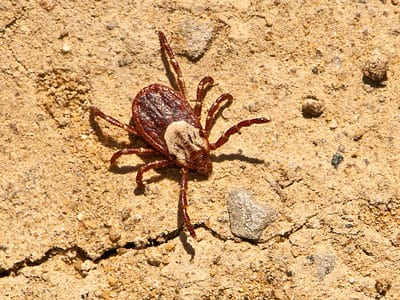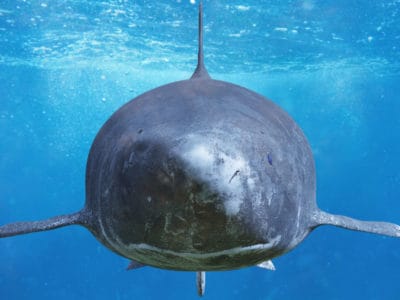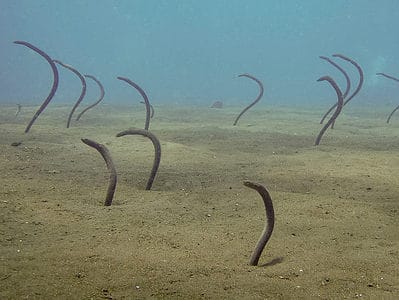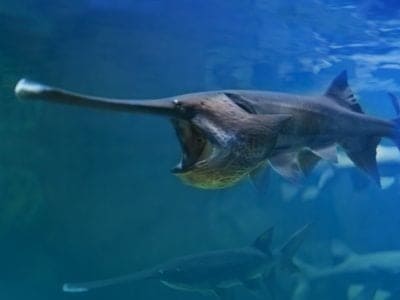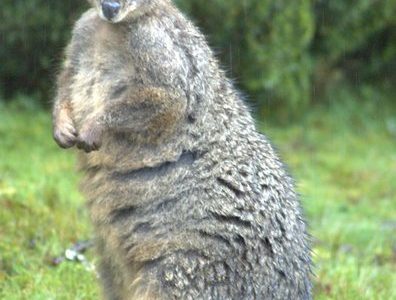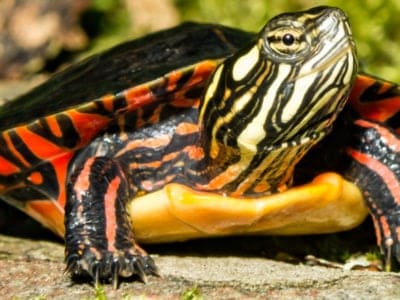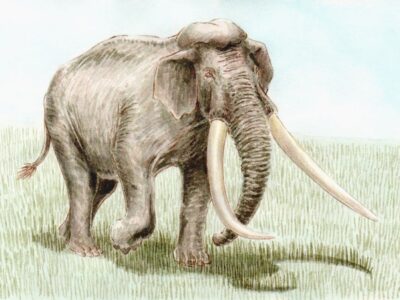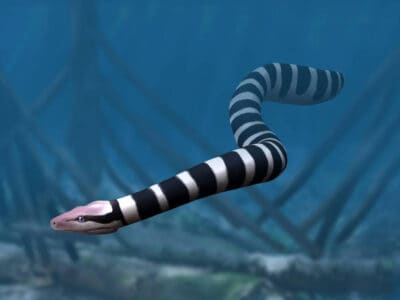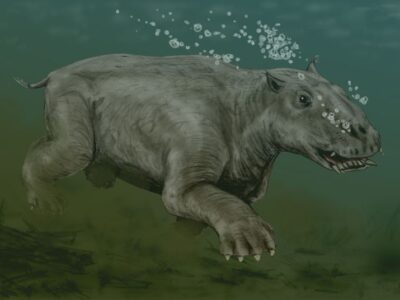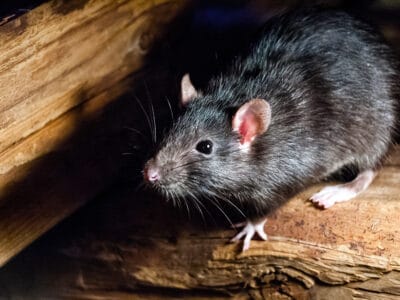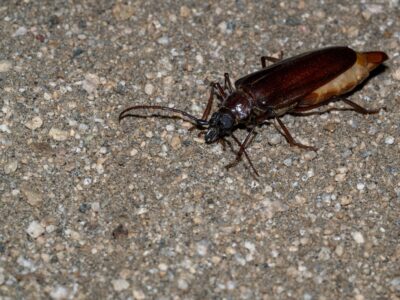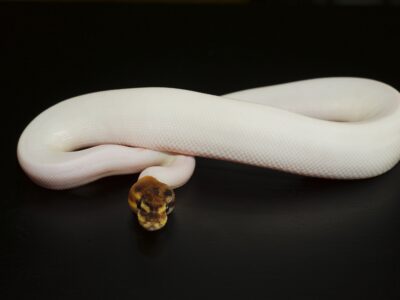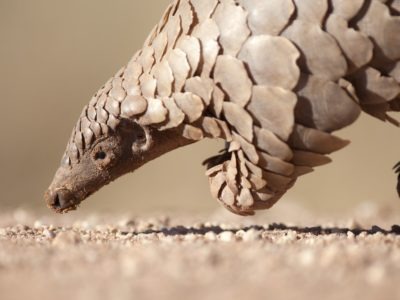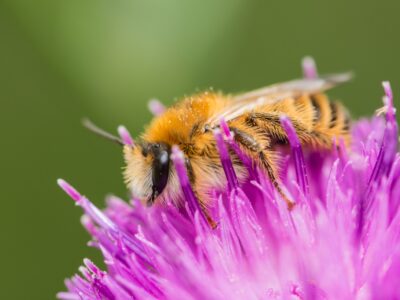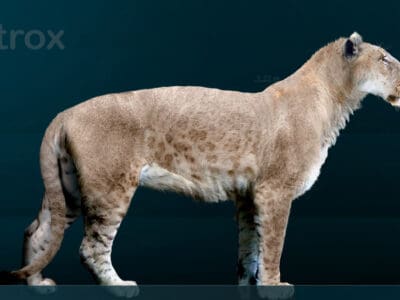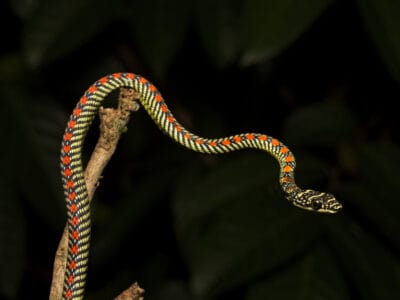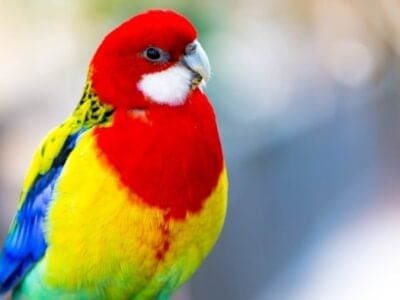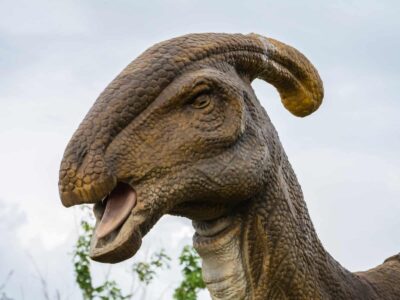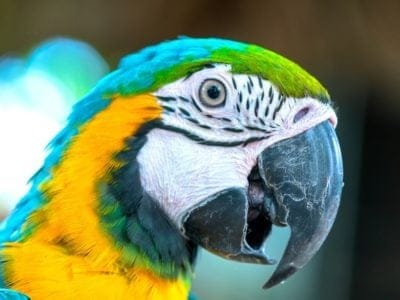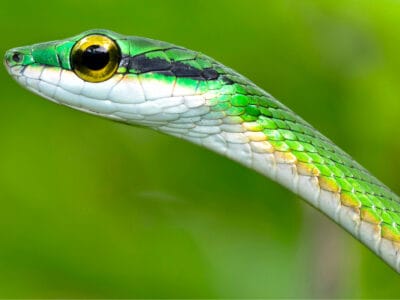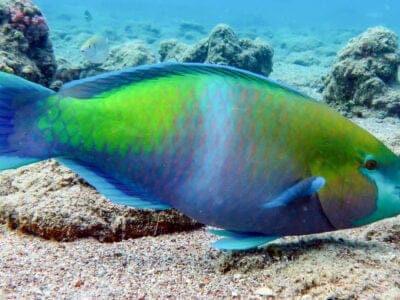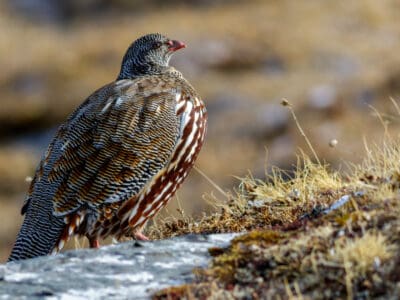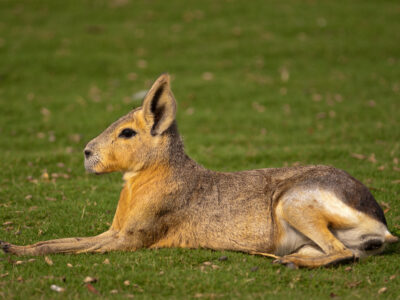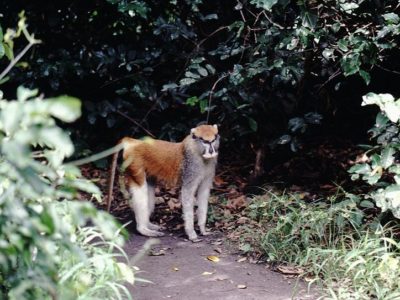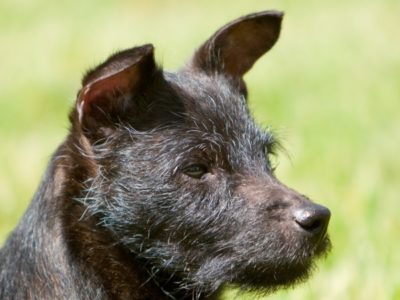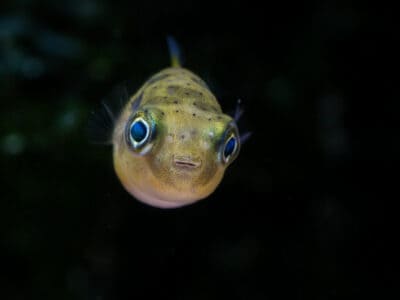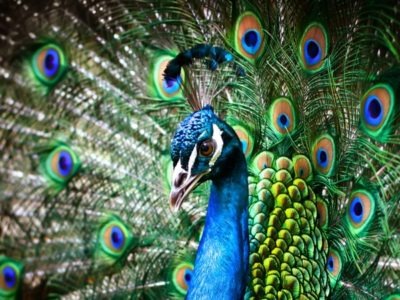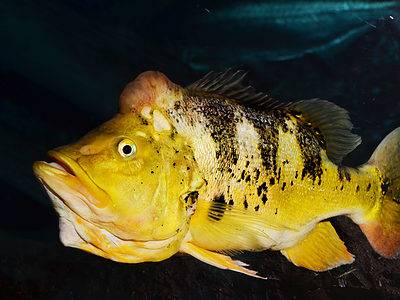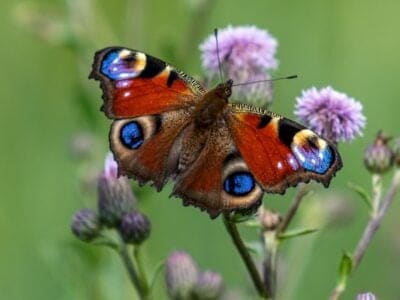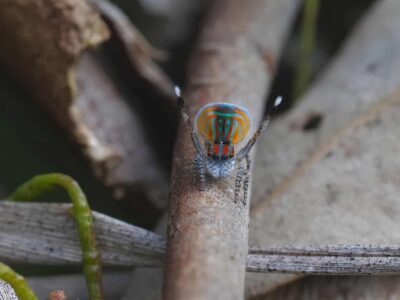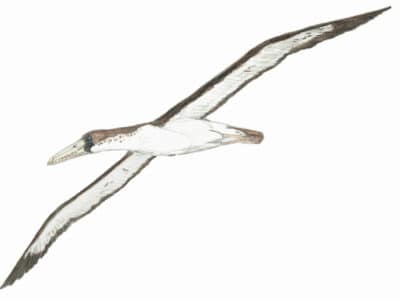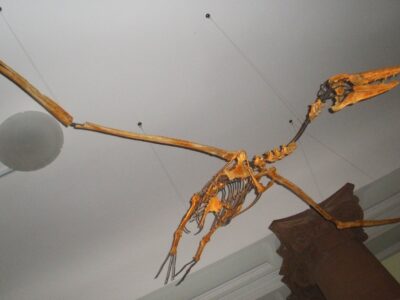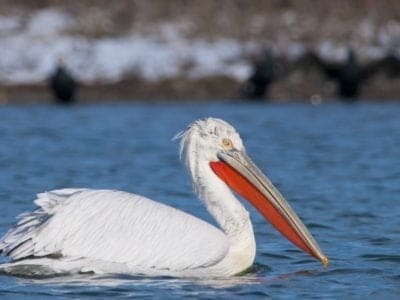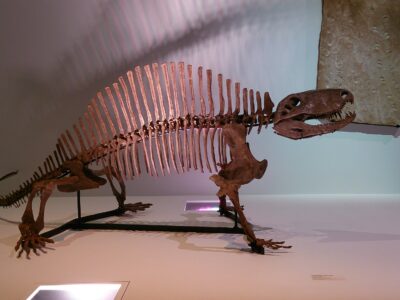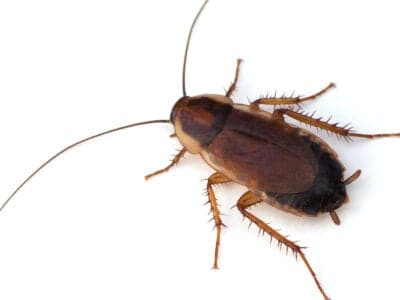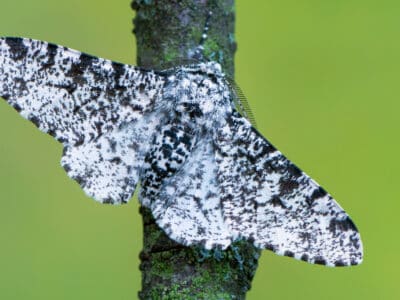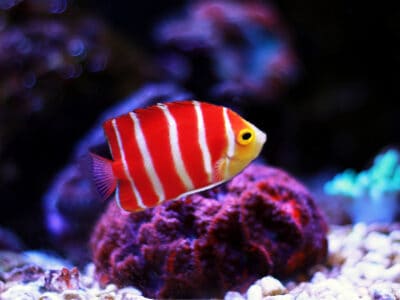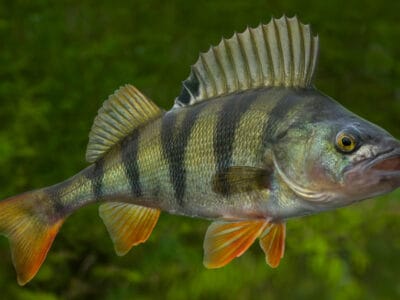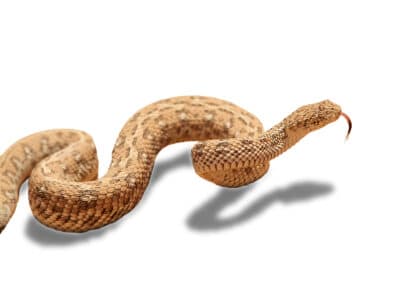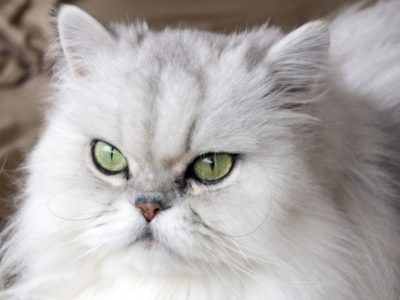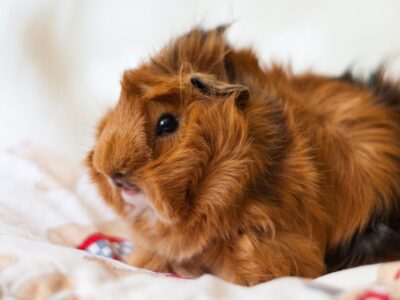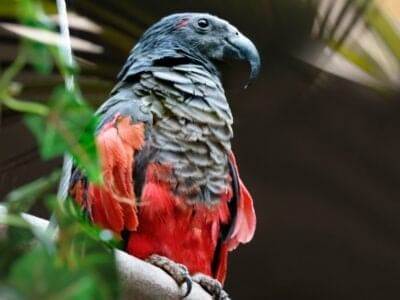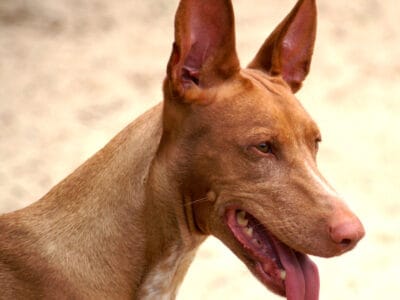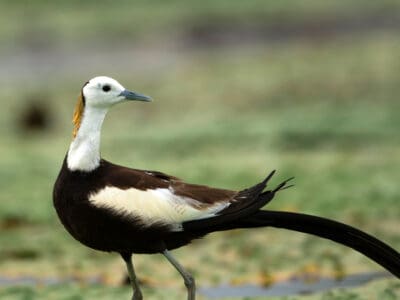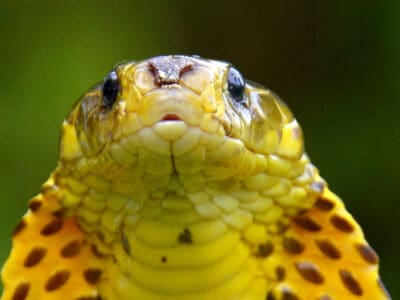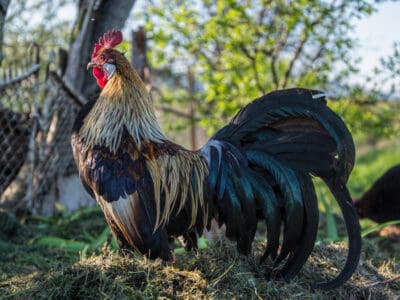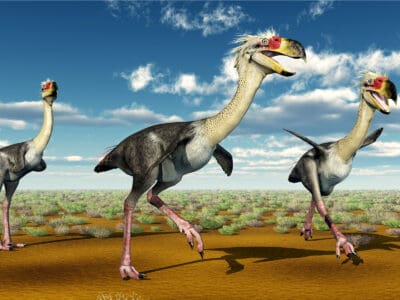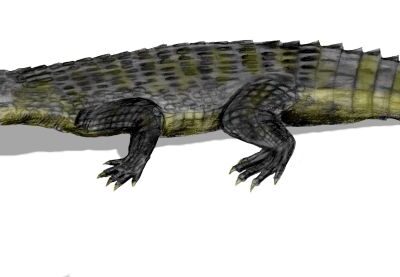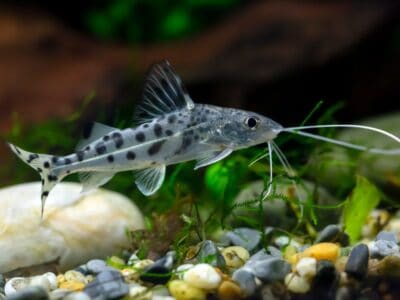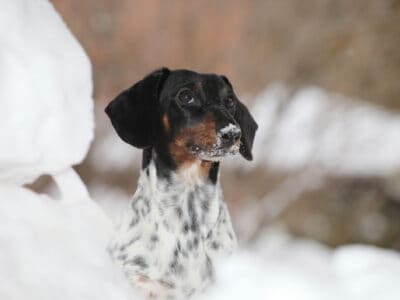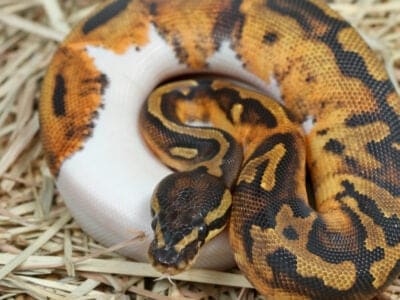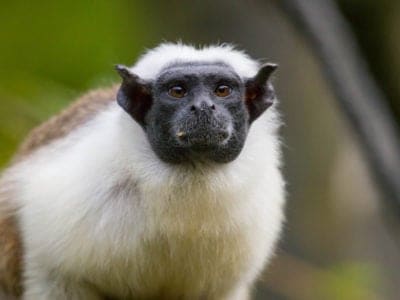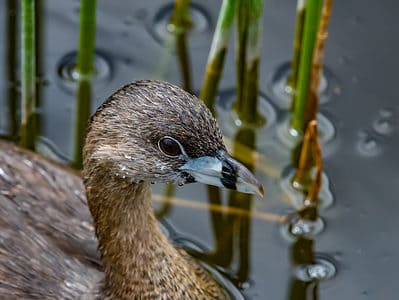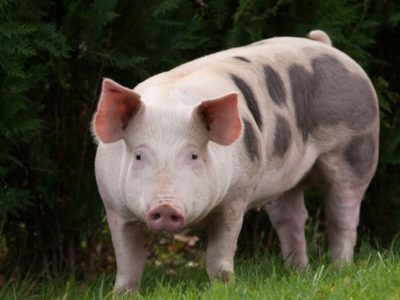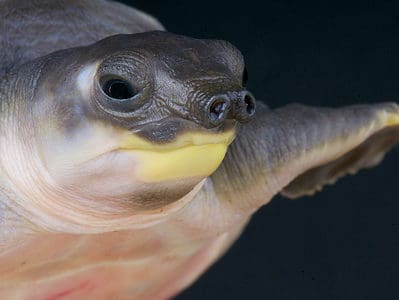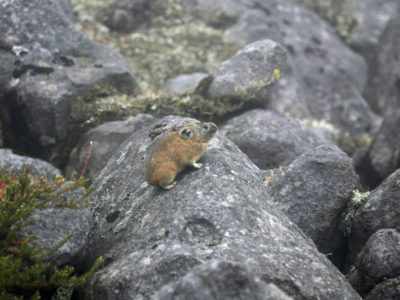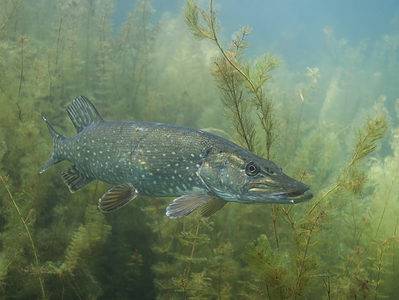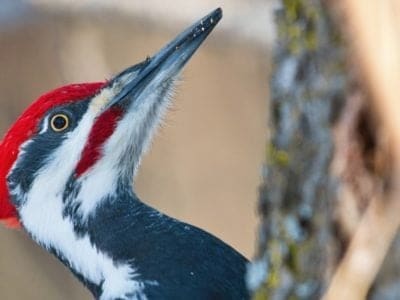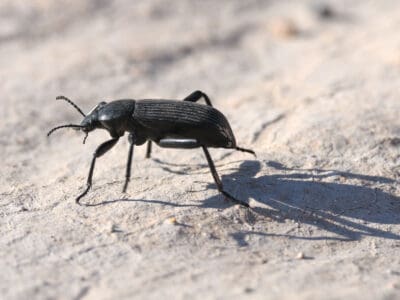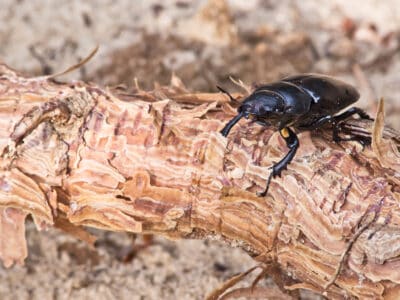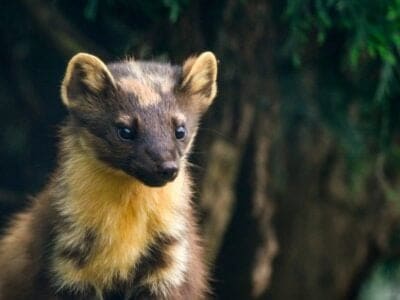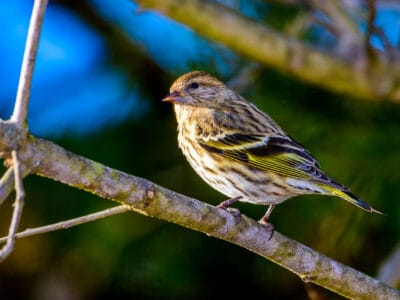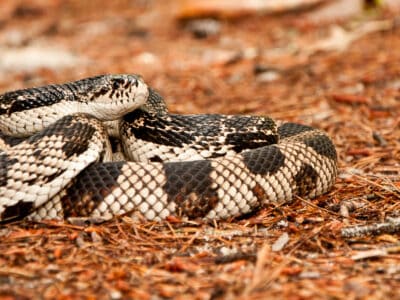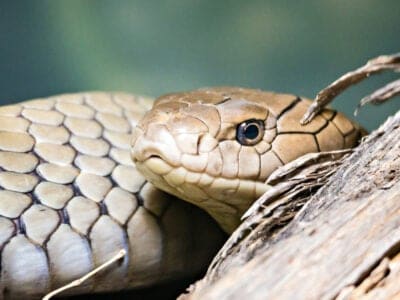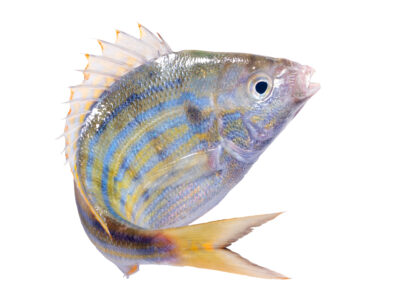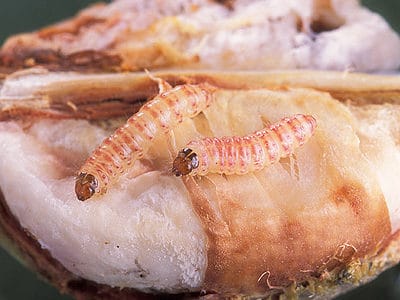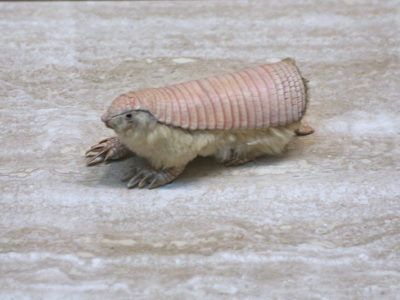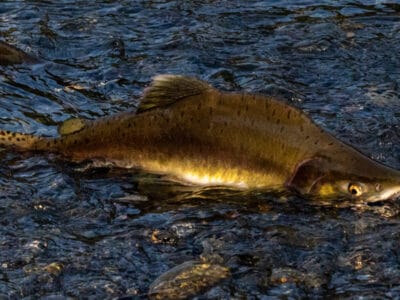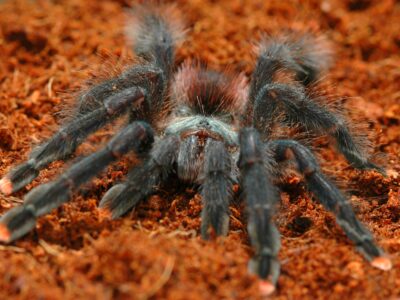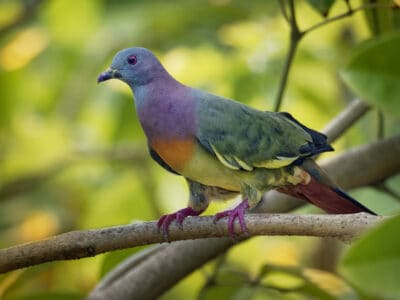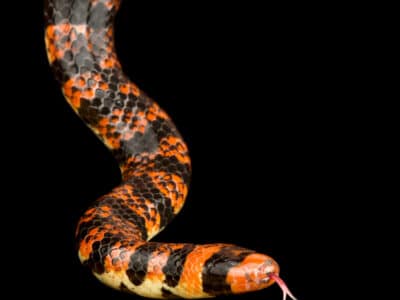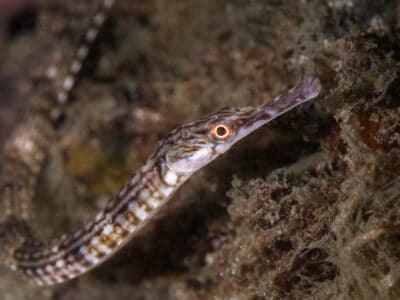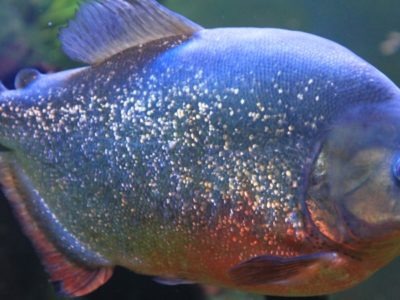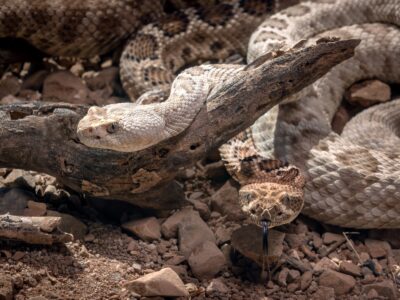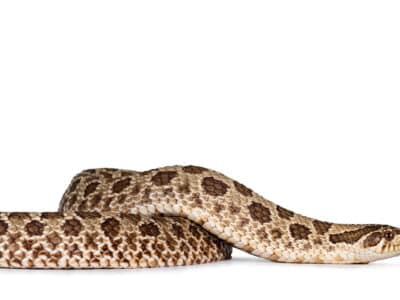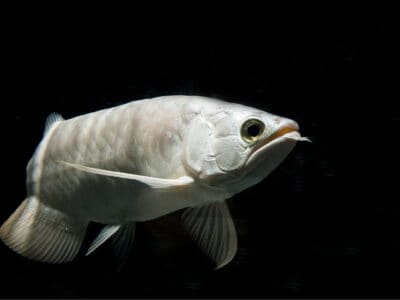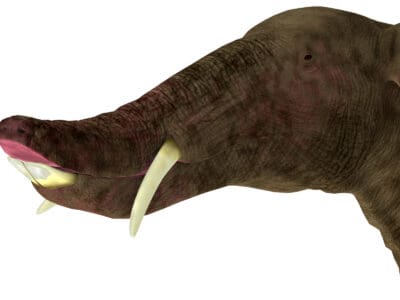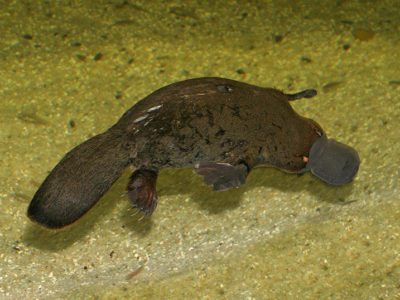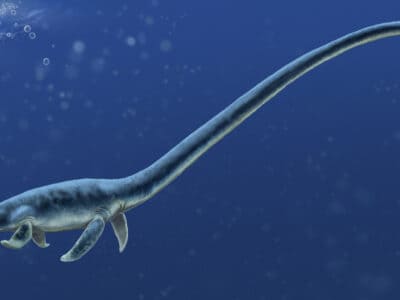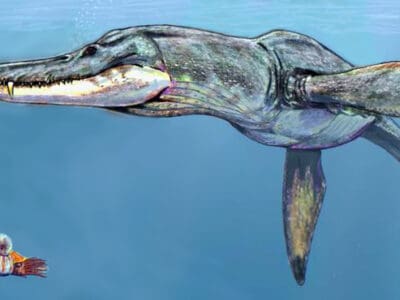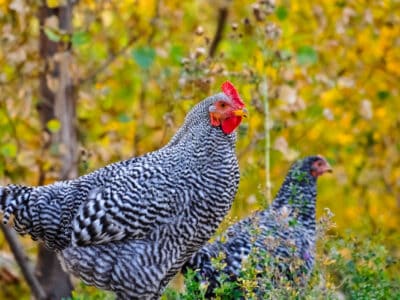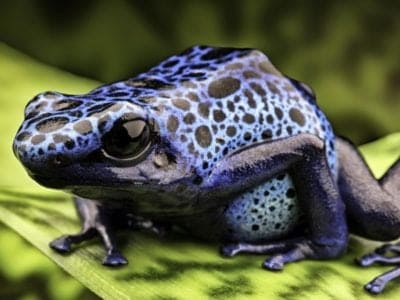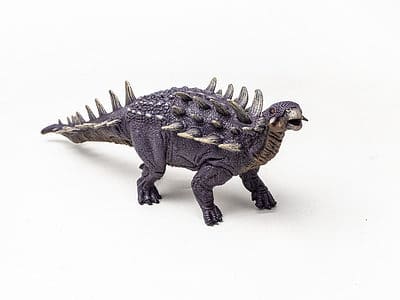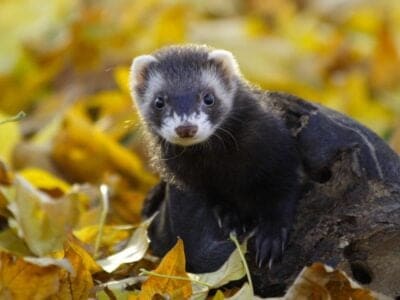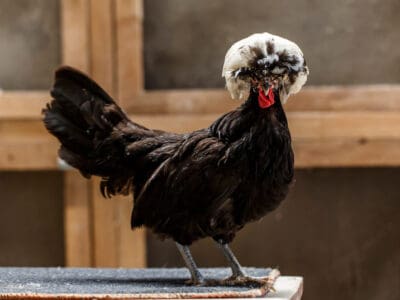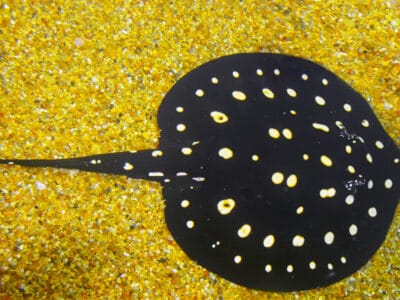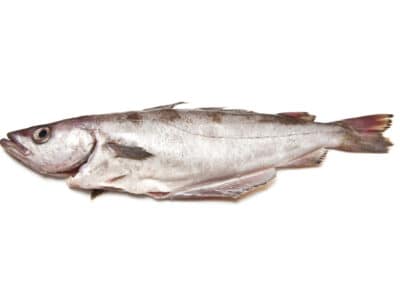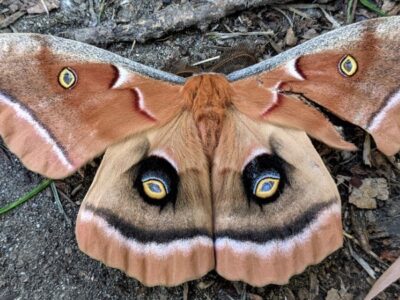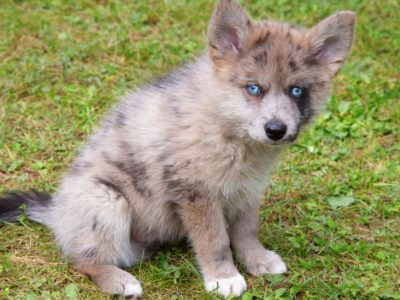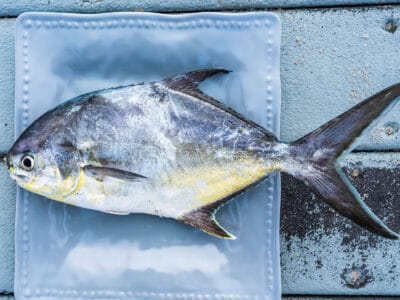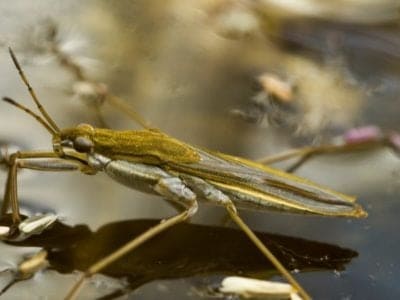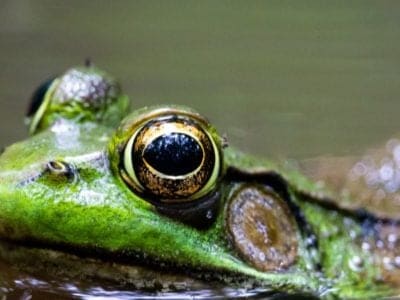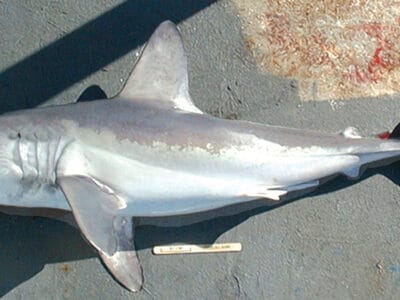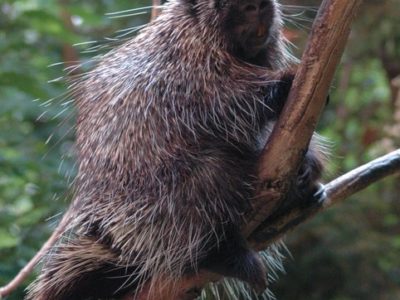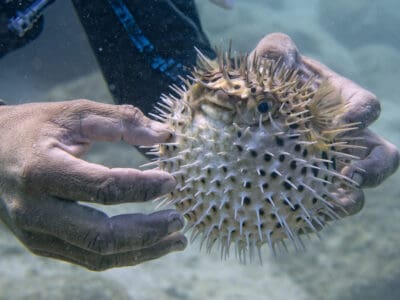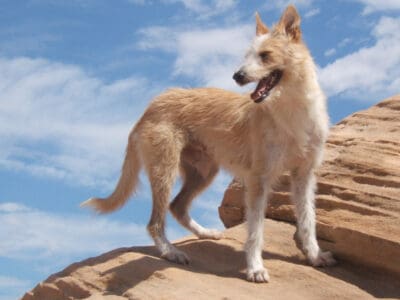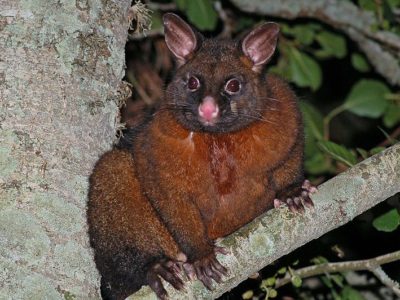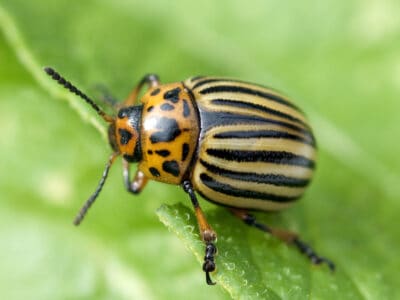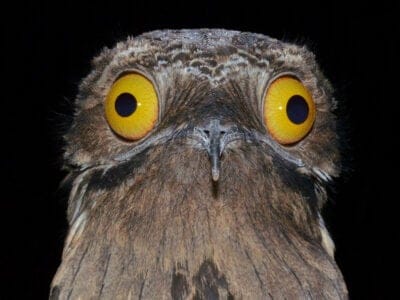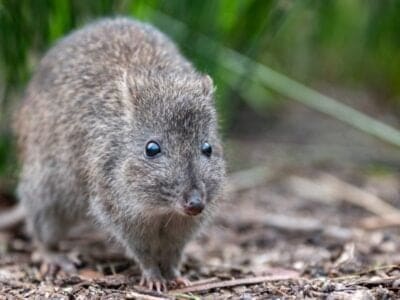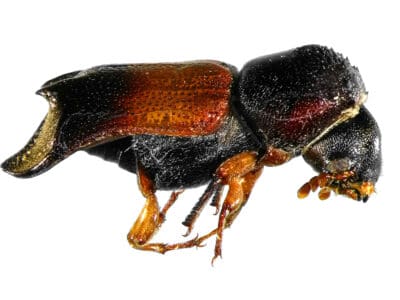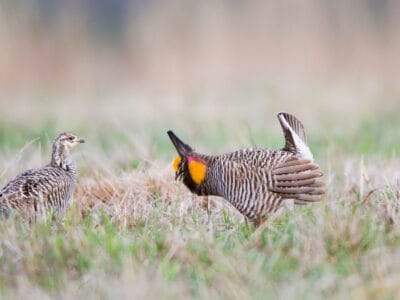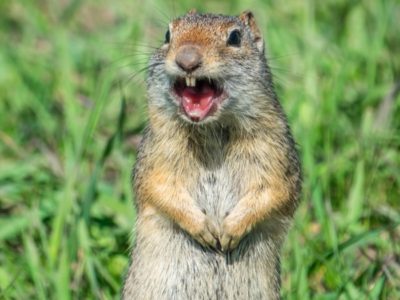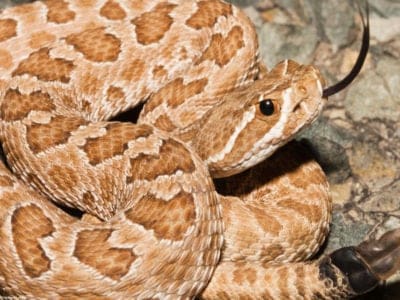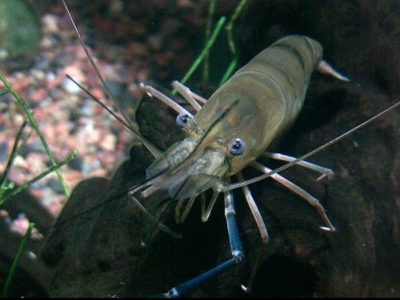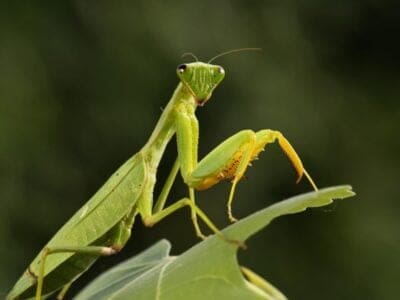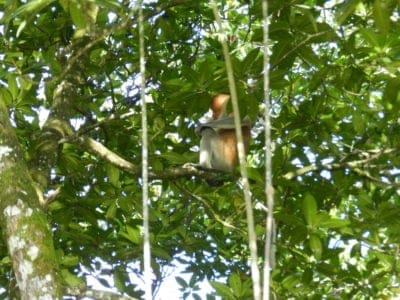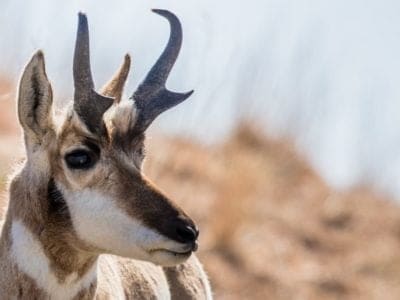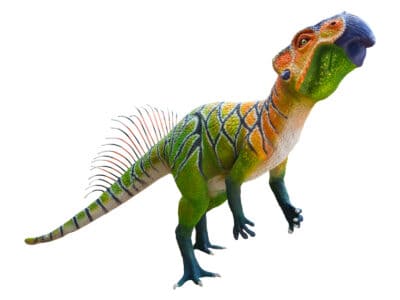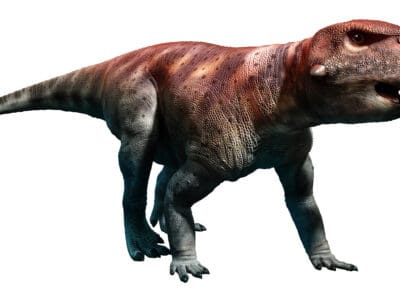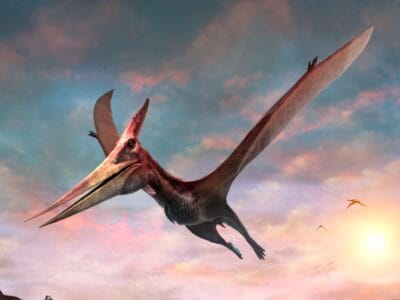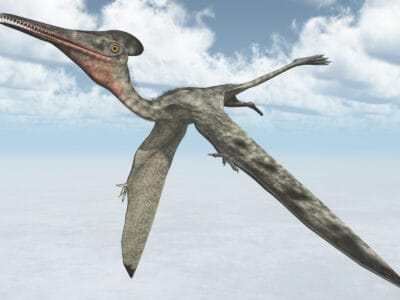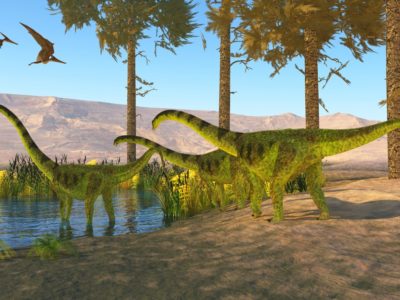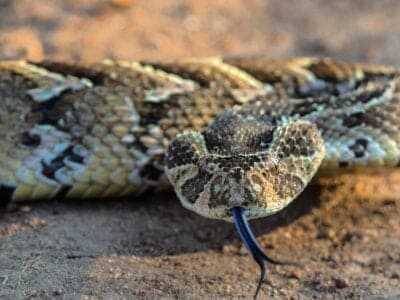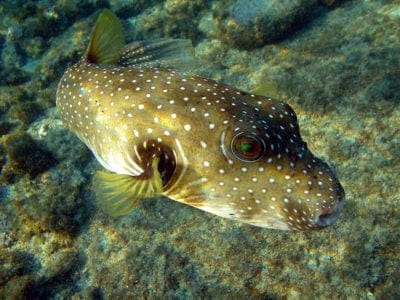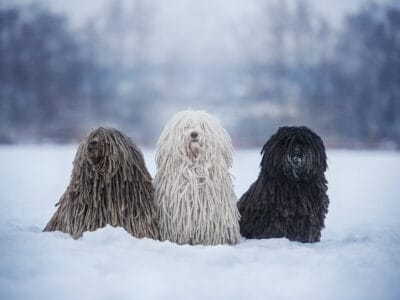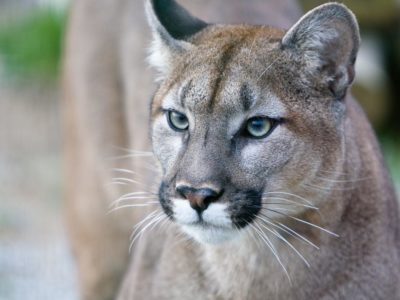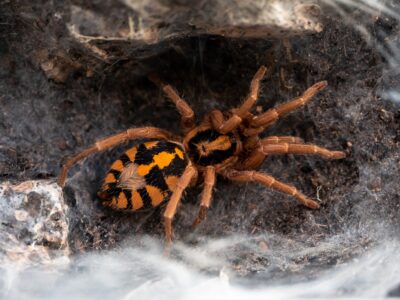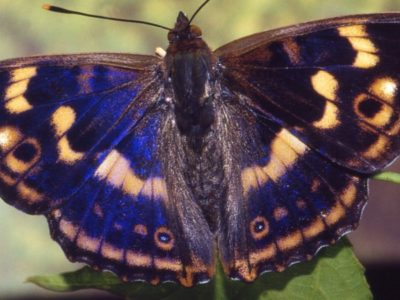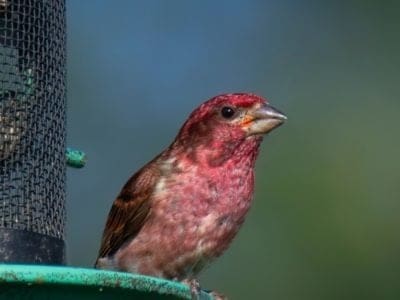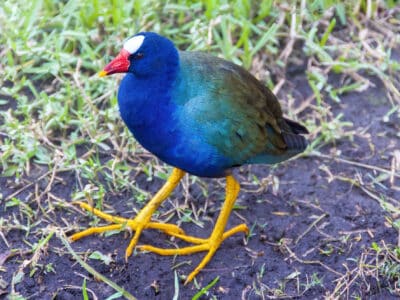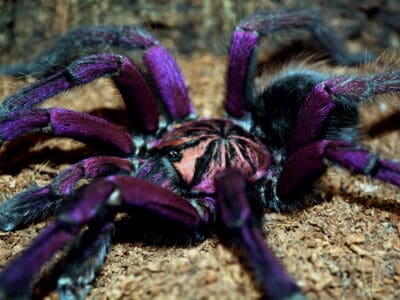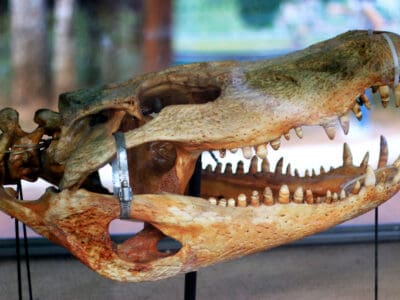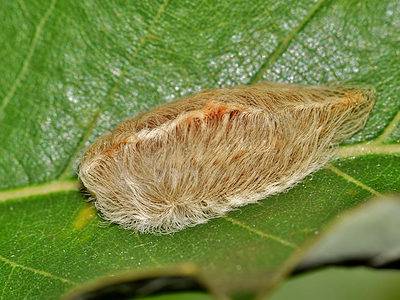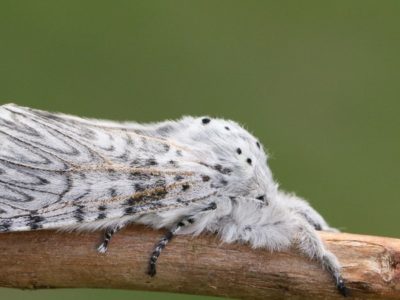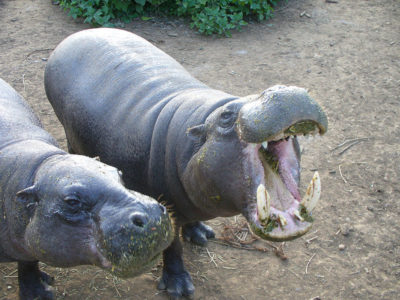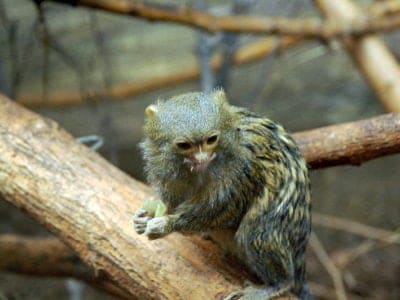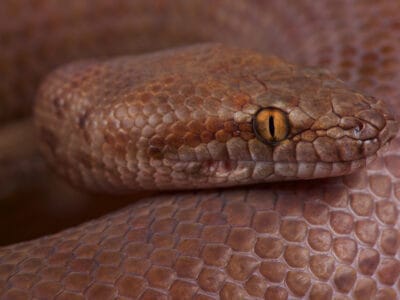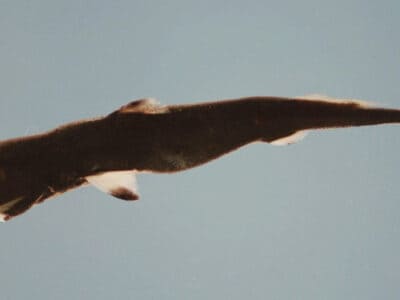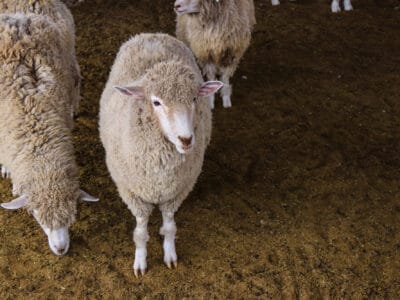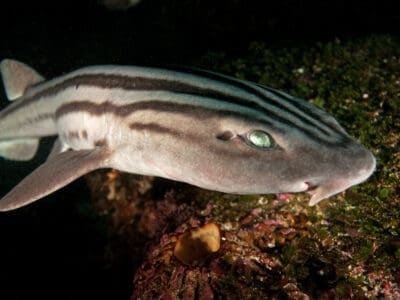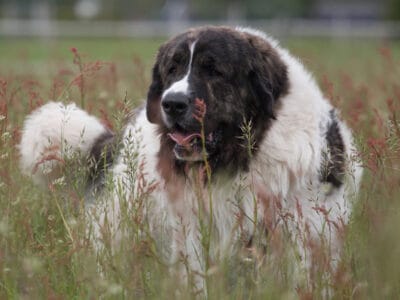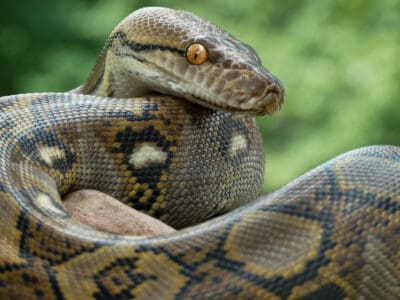Read below for information on 192 different animals that start with the letter P, from pademelon to pygmy marmoset. The most popular animal that starts with the letter P is the panther, which is not actually a species in of itself, but a common name for members of the big cat family that includes leopards and jaguars. The least popular P animal is the pool frog, the least common amphibian in the United Kingdom. Interesting facts about letter P name animals include:
- Puffer fish are the second most poisonous animal in the world
- Platypuses are so unique looking the first specimen seen in Europe was believed to be fake
- At 6-12 feet, pelicans have one of the largest wingspans of any bird
Jump to any letter
Alphabetical List of Animals That Start with P
- Pachycephalosaurus
- Pacific Coast Tick
- Pacific Sleeper Shark
- Pacific Spaghetti Eel
- Paddlefish
- Pademelon
- Painted Bunting
- Painted Turtle
- Palaeoloxodon namadicus
- Palaeophis
- Paleoparadoxia
- Palm Rat
- Palo Verde Beetle
- Panda Pied Ball Python
- Pangolin
- Pantaloon Bee
- Panther
- Panthera atrox (American Lion)
- Papillon
- Papillon Mix
- Paradise Flying Snake
- Parakeet
- Parasaurolophus
- Parrot
- Parrot Snake
- Parrotfish
- Parrotlet
- Parson Russell Terrier
- Parti Schnauzer
- Partridge
- Patagonian Cavy
- Patagonian Mara
- Patagotitan
- Patas Monkey
- Patterdale Terrier
- Pea Puffer
- Peacock
- Peacock Bass
- Peacock Butterfly
- Peacock Spider
- Peagle
- Peekapoo
- Pekingese
- Pelagornis
- Pelagornithidae
- Pelican
- Pelycosaurs
- Pembroke Welsh Corgi
- Penguin
- Pennsylvania Wood Cockroach
- Peppered Moth
- Peppermint Angelfish
- Perch Fish
- Père David’s Deer
- Peregrine Falcon
- Peringuey’s Adder
- Perro De Presa Canario
- Persian
- Peruvian Guinea Pig
- Peruvian Inca Orchid
- Pesquet’s Parrot (Dracula Parrot)
- Petit Basset Griffon Vendéen
- Petite Goldendoodle
- Pharaoh Hound
- Pheasant
- Pheasant-tailed Jacana
- Philippine Cobra
- Phoenix Chicken
- Phorusrhacos
- Phytosaurs
- Picardy Spaniel
- Pictus Catfish
- Piebald Dachshund
- Pied Ball Python
- Pied Tamarin
- Pied-Billed Grebe
- Pig
- Pig-Nosed Turtle
- Pigeon
- Pika
- Pike Fish
- Pileated Woodpecker
- Pinacate Beetle
- Pine Beetle
- Pine Marten
- Pine Siskin
- Pine Snake
- Pine Snake
- Pinfish
- Pink Bollworm
- Pink Fairy Armadillo
- Pink Salmon
- Pink Toed Tarantula
- Pink-Necked Green Pigeon
- Pipe Snake
- Pipefish
- Piranha
- Pit Bull
- Pit Viper
- Pitador
- Pitsky
- Plains Hognose Snake
- Platinum Arowana
- Platybelodon
- Platypus
- Plesiosaur
- Pliosaur
- Plott Hound Mix
- Plott Hounds
- Plymouth Rock Chicken
- Pocket Beagle
- Pocket Pitbull
- Podenco Canario
- Pointer
- Pointer Mix
- Poison Dart Frog
- Polacanthus
- Polar Bear
- Polecat
- Polish Chicken
- Polish Lowland Sheepdog
- Polish Tatra Sheepdog
- Polka Dot Stingray
- Pollock Fish
- Polyphemus Moth
- Pomapoo
- Pomchi
- Pomeagle
- Pomeranian
- Pomeranian Mix
- Pompano Fish
- Pomsky
- Pond Skater
- Poochon
- Poodle
- Poogle
- Pool Frog
- Porbeagle Shark
- Porcupine
- Porcupinefish
- Portuguese Podengo
- Possum
- Potato Beetle
- Potoo
- Potoroo
- Powderpost Beetle
- Prairie Chicken
- Prairie Dog
- Prairie Rattlesnake
- Prawn
- Praying Mantis
- Proboscis Monkey
- Procoptodon
- Pronghorn
- Psittacosaurus
- Psittacosaurus
- Pteranodon
- Pterodactyl
- Pudelpointer
- Puertasaurus
- Puff Adder
- Pufferfish
- Puffin
- Pug
- Pug Mix
- Pugapoo
- Puggle
- Pugshire
- Puli
- Puma
- Pumi
- Pumpkin Patch Tarantula
- Purple Emperor Butterfly
- Purple Finch
- Purple Gallinule
- Purple Tarantula
- Purussaurus
- Puss Caterpillar
- Puss Moth
- Pygmy Hippopotamus
- Pygmy Marmoset (Finger Monkey)
- Pygmy python
- Pygmy Rattlesnake
- Pygmy Shark
- Pygora Goat
- Pyjama Shark
- Pyrador
- Pyredoodle
- Pyrenean Mastiff
- Pyrenean Shepherd
- Pyrosome
- Python
Animals that Start with P
Pachycephalosaurus
- Kingdom
- Animalia
- Phylum
- Chordata
- Order
- Ornithischia
- Family
- Pachycephalosauridae
- Genus
- Pachycephalosaurus
- Scientific Name
- Pachycephalosaurus wyomingensis
Fun Fact: The Pachycephalosaurus' head was up to 30 times thicker and stronger than a human skull.
Pachycephalosaurus is an extinct, plant-eating dinosaur that lived about 76 million years ago. Its name, Pachycephalosaurus, which translates to the “thick-headed lizard,” best describes the dinosaur’s most notable feature—the enormous thick bone dome on its head. Pachycephalosaurus lived during the Late Cretaceous Period and is believed to be related to the ceratopsians. However, unlike these […] Read More
Pacific Coast Tick
- Kingdom
- Animalia
- Phylum
- Arthropoda
- Class
- Arachnida
- Order
- Ixodida
- Family
- Ixodidae
- Genus
- Dermacentor
- Scientific Name
- Dermacentor reticulatus
Fun Fact: Pacific Coast ticks can go without food for two to three years without dying.
The Pacific Coast tick is a hard-bodied tick species from the family Ixodidae. Like other ticks, it feeds mainly on the blood of mammals and occasionally attaches itself to humans. The Pacific Coast tick lives on all continents except Australia. The tick is a vector of various diseases, including Rocky Mountain spotted fever, Pacific Coast […] Read More
Pacific Sleeper Shark
- Kingdom
- Animalia
- Phylum
- Chordata
- Class
- Chondrichthyes
- Order
- Squaliformes
- Family
- Somniosidae
- Genus
- Somniosus
- Scientific Name
- Somniosus pacificus
Fun Fact: In 2015, a Pacific Sleeper Shark was filmed living underneath an active volcano near the Solomon Islands. This shark is able to survive in waters with very high temperatures and acidity!
Pacific Sleeper Sharks are most commonly found in the North Pacific on continental shelves and slopes in the Arctic and temperate waters. These sharks can be found between latitudes of 70 degrees north and 22 degrees north from the surface to 6,600 ft (2,000 meters) deep. Any records that place them in southern oceans are […] Read More
Pacific Spaghetti Eel
- Kingdom
- Animalia
- Phylum
- Chordata
- Class
- Actinopterygii
- Order
- Anguilliformes
- Family
- Congridae
- Genus
- Gorgasia
- Scientific Name
- Gorgasia japonica
Fun Fact: They have excellent eyesight
“Pacific spaghetti eels live in large colonies with hundreds of other spaghetti eels.“ Summary The Pacific spaghetti eel is a long, slender fish found in the temperate waters of the Pacific Ocean, with an abundance near Japan and New Zealand. They are a species of garden eel and spend their lives half buried in sand […] Read More
Paddlefish
- Kingdom
- Animalia
- Phylum
- Chordata
- Class
- Actinopterygii
- Order
- Acipenseriformes
- Family
- Polyodontidae
Fun Fact: Paddlefish have existed since the Cretaceous Period
The paddlefish, also known as the American paddlefish, Mississippi paddlefish, and spoonbill fish, is a freshwater fish that is primarily found in the open waters of the Mississippi River basin. With the Chinese paddlefish, it was one of just two extant species of paddlefish in the world. In 2020, however, the Chinese paddlefish was declared […] Read More
Pademelon
- Kingdom
- Animalia
- Phylum
- Chordata
- Class
- Mammalia
- Order
- Diprotodontia
- Family
- Macropodidae
- Genus
- Thylogale
- Scientific Name
- Thylogale
Fun Fact: Inhabits the jungles of the far east!
A cousin of the kangaroo and the wallaby Found in Australia’s forest and island areas, the pademelon is a small to mid-size marsupial. It is a solitary animal and a nocturnal one. There are seven pademelon species, but the animal population numbers are suffering because many of them are losing their habitats and being hunted. […] Read More
Painted Bunting
- Kingdom
- Animalia
- Phylum
- Chordata
- Class
- Aves
- Order
- Passeriformes
- Family
- Cardinalidae
- Genus
- Passerina
- Scientific Name
- Passerina ciris
Fun Fact: They are one of the most colorful species of birds.
Painted Bunting Summary “The painted bunting is one of the most colorful species of bird in the world!” The painted bunting is a member of the cardinal family. It is known for its bright, colorful plumage. Males will develop this coloration during their second year. During their first year, they have a similar appearance to […] Read More
Painted Turtle
- Kingdom
- Animalia
- Phylum
- Chordata
- Class
- Reptilia
- Order
- Testudines
- Family
- Emydidae
- Genus
- Chrysemys
- Scientific Name
- Chrysemys picta
Fun Fact: Male painted turtles have longer nails.
Painted turtles have an incredibly long lifespan and can get as old as 50 years. The painted turtle is North America‘s most common type of aquatic turtle. These adorable small reptiles have wide shells, dark skin, and colorful stripes across their legs and neck. Whether they’re living together in a shallow pond or enjoying domestic […] Read More
Palaeoloxodon namadicus
- Kingdom
- Animalia
- Phylum
- Chordata
- Class
- Mammalia
- Order
- Proboscidea
- Family
- Elephantidae
- Genus
- Palaeoloxodon
- Scientific Name
- Palaeoloxodon namadicus
Fun Fact: Palaeloxodon namadicus was the largest land mammal ever found
Palaeoloxodon namadicus, also called the Asian straight-tusked elephant, is a species of prehistoric elephant that lived from the Middle to Late Pleistocene. It originated in Africa in the Pliocene Epoch before expanding into Asia. Palaeoloxodon namadicus is one of the largest elephant species, with some being over 13 feet tall at the shoulder. The species […] Read More
Palaeophis
- Kingdom
- Animalia
- Phylum
- Chordata
- Class
- Reptilia
- Order
- Squamata
- Family
- Palaeophiidae
- Genus
- Palaeophis
- Scientific Name
- Palaeophis typhaeus
Fun Fact: This snake was as long as a school bus!
Quick Facts Palaeophis was a large, aquatic snake that went extinct 23-33 million years ago.Different species of Palaeophis ranged in size from 4-40 feet long.They lived in shallow seas and coastal environments, feeding on fish and other marine life – possibly even whales! They were similar to modern snakes but had some features that seem […] Read More
Paleoparadoxia
- Kingdom
- Animalia
- Phylum
- Chordata
- Class
- Mammalia
- Order
- Desmostylia
- Family
- Paleoparadoxiidae
- Genus
- Paleoparadoxia
Fun Fact: Scientists were able to determine that Paleoparadoxia was exclusively aquatic by comparing the rib cages of fossils to modern species of mammals like dugongs and polar bears.
Millions of years ago, a mysterious genus of animal called Paleoparadoxia once swam and foraged in the Pacific Ocean. These herbivorous animals inhabited a wide range stretching from the shores of Japan all the way to the cool waters along the Pacific Coast of North America. Description & Size The Paleoparadoxia is a genus of […] Read More
Palm Rat
- Kingdom
- Animalia
- Phylum
- Chordata
- Class
- Sarcopterygii
- Order
- Rodentia
- Family
- Muridae
- Genus
- Rattus
- Scientific Name
- Rattus rattus
Fun Fact: Domesticated house rats were bred in England during the 1920s, and one of these variations had a green-tinted fur.
The Palm rat’s official name is Rattus Rattus, also known as the black rat, the house rat, and the ship rat. Palm rats are native to North America and tend to live in the warmer regions and more coastal parts of the country. And because distinguishing between the different types of rat species can be […] Read More
Palo Verde Beetle
- Kingdom
- Animalia
- Phylum
- Arthropoda
- Class
- Insecta
- Order
- Coleoptera
- Family
- Cerambycidae
- Genus
- Derobrachus
- Scientific Name
- Derobrachus hovorei
Fun Fact: The palo verde beetle is one of the largest beetles in North America
The palo verde beetle is one of the largest beetles in North America. Summary The Palo Verde Beetle (Derobrachus hovorei) is a species of wood-boring beetle that belongs to the family Cerambycidae. The beetle is native to the United States and Northern Mexico, where they’re mostly associated with the palo verde tree. The beetle is […] Read More
Panda Pied Ball Python
- Kingdom
- Animalia
- Phylum
- Chordata
- Class
- Reptilia
- Order
- Squamata
- Family
- Pythonidae
- Genus
- Python
- Scientific Name
- Python regius
Fun Fact: The panda pied ball python morph is a combination of the piebald and black pastel traits.
“The panda pied ball python morph is a stunning combination of the recessive piebald trait and the co-dominant black pastel trait.” Panda Pied Ball Python Summary Breeders have developed thousands of intricately detailed ball python morphs since the 1990s. In recent years, reptile breeders have been very creative when combining traits to create new morphs. […] Read More
Pangolin
- Kingdom
- Animalia
Fun Fact: Bad eyesight, but great sense of smell
“The Pangolin is the most trafficked mammal on the planet.” The pangolin isn’t an ordinary animal by any means. They have interesting scales and a characteristic reaction of rolling over when threatened, leaving a distinct impression on those who encounter them. Their unique coat has also made them a prime target for poaching and trafficking, […] Read More
Pantaloon Bee
- Kingdom
- Animalia
- Order
- Hymenoptera
- Family
- Melittidae
- Genus
- Dasypoda
- Scientific Name
- Dasypoda hirtipes
Fun Fact: N/A
In the bustling world of bees, Dasypoda hirtipes, commonly known as the pantaloon bee, stands out with its alluring beauty. Dasypoda hirtipes is in the family Melittidae, a relatively small family of bees, with approximately 200 recognized species in 23 genera. Dasypoda is one of the largest genera in this family, with approximately 95 recognized […] Read More
Panther
- Kingdom
- Animalia
- Phylum
- Chordata
- Class
- Mammalia
- Order
- Carnivora
- Family
- Felidae
- Genus
- Panthera
- Scientific Name
- Panthera pardus, Panthera onca
Fun Fact: Prefers to hunt at night than during the day!
Classification The Panther (also commonly known as the Black Panther) is a large member of the Big Cat family, native to Asia, Africa and the Americas. The Panther is not a distinct species itself but is the general name used to refer to any black-colored feline of the Big Cat family, most notably Leopards and […] Read More
Panthera atrox (American Lion)
- Kingdom
- Animalia
- Phylum
- Chordata
- Class
- Mammalia
- Order
- Carnivora
- Family
- Felidae
- Genus
- Panthera
- Scientific Name
- Panthera atrox
Fun Fact: Panthera atrox was about 25 percent larger than modern lions
Panthera atrox—commonly known as “the American lion”—is an extinct species of lion native to the North American continent. The relationship between this lion and modern lion species has been contentious for years after its discovery. However, recent studies have revealed its close relationship with the cave lion. American lions ruled the North American continents for […] Read More
Papillon
- Kingdom
- Animalia
- Phylum
- Chordata
- Class
- Mammalia
- Order
- Carnivora
- Family
- Canidae
- Genus
- Canis
- Scientific Name
- Canis lupus
Fun Fact: Originally called the Toy Spaniel, the Papillon is one of the oldest breeds in the toy group. They can be found in artwork dating back to the 16th century.
Originally called the Toy Spaniel, this is one of the oldest breeds in the toy group. They can be found in artwork dating back to the 16th century. History And Origin At first called the Toy Spaniel, the Papillon, which originated in France, is one of the oldest breeds of toy spaniel that has provided […] Read More
Papillon Mix
- Kingdom
- Animalia
- Phylum
- Chordata
- Class
- Mammalia
- Order
- Carnivora
- Family
- Canidae
- Genus
- Canis
- Scientific Name
- Canis familiaris
Fun Fact: Fluffy, energetic lap dog
A papillon mix is generally between a papillon dog and another breed, typically another small toy breed like a Chihuahua or toy poodle. Papillon mix dogs are known for their friendly temperaments and outgoing personalities. They love to play and be around people, which makes them great companions. They are also intelligent and quick learners, […] Read More
Paradise Flying Snake
- Kingdom
- Animalia
- Phylum
- Chordata
- Class
- Reptilia
- Order
- Squamata
- Family
- Colubridae
- Genus
- Chrysopelea
- Scientific Name
- Chrysopelea paradisi
Fun Fact: Paradise Flying Snakes can glide over 100 yards!
The paradise flying snake, also commonly known as the paradise tree snake, is a mildly venomous constrictor found throughout southeast Asia. The most notable feature of the paradise flying snake is that, as its name suggests, it is capable of a sort of gliding flight. These snakes can jump from treetops and manipulate their bodies […] Read More
Parakeet
- Kingdom
- Animalia
- Phylum
- Chordata
- Class
- Aves
- Order
- Psittaciformes
- Family
- Psittacidae
Fun Fact: Monk parakeets are the only parakeets that actually build nests. They’re also the only parakeets to nest in great colonies.
The little Parakeet has delighted people with their intelligence, playfulness, and their plumage of fancy colors for hundreds of years. Not only that, they are easy to care for and low cost. 4 Amazing Parakeet Facts! Most adult birds have few predators. The rose-ringed parakeet makes soft sounds like purrs to scare predators off.It is […] Read More
Parasaurolophus
- Kingdom
- Animalia
- Phylum
- Chordata
- Order
- †Ornithischia
- Family
- †Hadrosauridae
- Genus
- †Parasaurolophus
Fun Fact: The Parasaurolophus ran on its hindlegs at speeds of up to 30mph!
The Parasaurolophus ran on its hind legs at speeds of up to 30 miles per hour. Classification and Scientific Name The Parasaurolophus is a member of the Order Ornithischia, the Clade Ornithopoda, the Family Hadrosauridae, the Subfamily Lambeosaurinae, and the Tribe Parasaurolophini, all of which are extinct. This dinosaur lived in North America, and possibly […] Read More
Parrot
- Kingdom
- Animalia
- Phylum
- Chordata
- Class
- Aves
- Order
- Psittaciformes
- Family
- Psittacidae
Fun Fact: Can live for up to 100 years!
Parrots are popular as pets, offering raucous and gaudy entertainment. Parrots, of the order Psittaciformes, are known for their wittiness, amusement, and intelligence, though they have an incredibly affectionate side as well. They are famous for the extensive imitation, including human words and multitudes of sounds. 6 Incredible Parrot Facts! The word “parrot” is believed […] Read More
Parrot Snake
- Kingdom
- Animalia
- Phylum
- Chordata
- Class
- Reptilia
- Order
- Squamata
- Family
- Colubridae
- Genus
- Leptophis
- Scientific Name
- Leptophis ahaetulla
Fun Fact: The parrot snake shows off with bright green and bronze colors that cover its entire body.
The parrot snake shows off bright green and bronze colors that cover its entire body. They are often called non-venomous snakes, but the truth is a different story. Parrot snakes have very mild venom that sometimes causes local swelling and pain. They grow extremely long and slender, slipping through the trees after their prey. 5 […] Read More
Parrotfish
- Kingdom
- Animalia
- Phylum
- Chordata
- Class
- Actinopterygii
- Order
- Labriformes
- Family
- Scaridae
- Scientific Name
- scaridae
Fun Fact: The parrotfish can change from female to male at some point in its life.
The parrotfish has the ability to switch between sexes at certain points of its life. The parrotfish is a family of about 80 to 90 species. They are named for their unusual parrot-like beak and bright colors along the body. There are very few animals quite like them in the entire ocean. Some of the […] Read More
Parrotlet
- Kingdom
- Animalia
- Phylum
- Chordata
- Class
- Aves
- Order
- Psittaciformes
- Family
- Psittacidae
- Genus
- Forpus
- Scientific Name
- Forpus cyanopygius
Fun Fact: Parrotlets aren't the world's tiniest parrot — that would be the pygmy parrot of Australasia.
“The Smallest of the New World Parrots” Parrotlets are even smaller in size than parakeets. They have blunt tails and a feisty personality that can be aggressive. They can even deliver a surprisingly painful bite. A pet parrotlet is less social than a parakeet, though it can bond very intensely with a mate or its […] Read More
Parson Russell Terrier
- Kingdom
- Animalia
- Phylum
- Chordata
- Class
- Mammalia
- Order
- Carnivora
- Family
- Canidae
- Genus
- Canis
- Scientific Name
- Canis lupus
Fun Fact: The root stock of the breed was a dog named Trump
The Parson Russell Terrier was bred in England in the 1800s for the purpose of hunting foxes. These hunts were largely formalized affairs involving riders on horseback and packs of hounds pursuing an individual fox to his eventual doom. While there were many breeds of hounds that served well in the pursuit of the fox, […] Read More
Parti Schnauzer
- Kingdom
- Animalia
- Phylum
- Chordata
- Class
- Mammalia
- Order
- Carnivora
- Family
- Canidae
- Genus
- Canis
- Scientific Name
- Canis lupus
Fun Fact: Parti Schnauzers are great pest controllers. They were bred to catch rodents, so if you have a rat problem, they might be the pet for you.
Parti schnauzers are not a specific breed of dog; it’s a very rare color pattern consisting of a predominant base color with white patches in between. The parti base colors vary from black, liver/pepper, liver/tan, salt and pepper, and black and silver. The word “parti” can be placed in front of any other color because […] Read More
Partridge
- Kingdom
- Animalia
- Phylum
- Chordata
- Class
- Aves
- Order
- Galliformes
- Family
- Phasianidae
Fun Fact: Long-lost civilizations have immortalized male partridges in art, depicting them as a symbol of fertility.
The partridge is a ground-dwelling bird with over 40 various species from 14 genera. They are game birds, often hunted for food or used as a target for practicing shooting. Partridges are adaptable and thrive in various locations across the globe. They are found in Europe, Asia, and Africa. In addition, several species were relocated […] Read More
Patagonian Cavy
- Kingdom
- Animalia
- Phylum
- Chordata
- Class
- Mammalia
- Order
- Rodentia
- Family
- Caviidae
- Genus
- Dolichotis
- Scientific Name
- Dolichotis patagonum
Fun Fact: Patagonian cavies run anywhere from 18-45 mph!
An expertly researched article on the Patagonian cavy: where they live, what they eat, & high-quality pictures of the Patagonian cavy. Read More
Patagonian Mara
- Kingdom
- Animalia
- Phylum
- Chordata
- Class
- Mammalia
- Order
- Rodentia
- Family
- Caviidae
- Genus
- Dolichotis
- Scientific Name
- Dolichotis patagonum
Fun Fact: Patagonian maras mate for life, but raise their pups in large communal dens!
Patagonian maras form monogamous pairs, but raise their pups in large communal dens! The Patagonian mara is the second largest rodent in the world. Only the capybara is larger. They can grow to approximately 30 inches in length and can weigh up to 35 pounds. That’s roughly the size of the average Australian cattle dog! […] Read More
Patagotitan
- Kingdom
- Animalia
Fun Fact: The patagotitan's bones were hollow and air-filled.
Patagotitan Description and Size Height (shoulder): 18 – 20 feetHeight (head): Unknown, possibly 40 – 50 feetWeight: 65 to 75 tonsLength: up to 122 feetDistinctive Features: Massive size, hollow bones It was several years after the first patagotitan was discovered that it was given its official name so much of the information available refers to […] Read More
Patas Monkey
- Kingdom
- Animalia
- Phylum
- Chordata
- Class
- Mammalia
- Order
- Primates
- Family
- Cercopithecidae
- Genus
- Erythrocebus
- Scientific Name
- Erythrocebus patas
Fun Fact: The fastest species of primate in the world!
Patas Monkey Classification and Evolution The Patas Monkey is a medium to large sized species of Old World Monkey that is found inhabiting the open grasslands of Central Africa. Also known as the Military Monkey, the Hussar Monkey and the Red Guenon, the Patas Monkey is the only member of its genus due to the […] Read More
Patterdale Terrier
- Kingdom
- Animalia
- Phylum
- Chordata
- Class
- Mammalia
- Order
- Carnivora
- Family
- Canidae
- Genus
- Canis
- Scientific Name
- Canis lupus
Fun Fact: A Patterdale Terrier’s small body structure allows it to squeeze into fox burrows.
Patterdale Terriers have a strong, lean body that allows them to squeeze into fox burrows. Patterdale Terriers are strong, friendly, and loyal dogs. This breed originates from Great Britain and dates back to the mid-20th century. Patterdale terriers were bred for fox hunting, meant to drive the fox out of its burrow. The temperament of […] Read More
Pea Puffer
- Kingdom
- Animalia
- Phylum
- Chordata
- Class
- Actinopterygii
- Order
- Tetraodontiformes
- Family
- Tetraodontidae
- Genus
- Carinotetraodon
- Scientific Name
- Carinotetraodon travancoricus
Fun Fact:
The Pea puffer (C. travancoricus), also known as the dwarf pufferfish, is the smallest species of freshwater pufferfish and is native to Southwest India. These fish are small and typically grow no larger than 1 inch (2.5 cm) in size as an adult. The pea puffer is a popular fish in the aquarium hobby where […] Read More
Peacock
- Kingdom
- Animalia
- Phylum
- Chordata
- Class
- Aves
- Order
- Galliformes
- Family
- Phasianidae
- Genus
- Pavo
Fun Fact: Most commonly found on the Indian mainland!
“Peacocks are among the biggest flying birds on earth.” Peacocks are famous for their large, iridescent tail feather plumage. While it is the most widely recognized feature of peafowls, only males have these beautiful tail colorings. Some species have plumage that is smaller than the commonly known blue peacock, or Indian peacock which is what […] Read More
Peacock Bass
- Kingdom
- Animalia
- Phylum
- Chordata
- Class
- Actinopterygii
- Order
- cichliformes
- Family
- Cichlidae
- Genus
- Cichla Bloch
- Scientific Name
- Cichla ocellaris
Fun Fact: Peacock bass is known for their aggressive behavior and predatory instincts, making them a challenging target for sport fishermen.
The Peacock bass is a tropical freshwater fish native to South America, known for its bright colors and aggressive behavior, making it a popular target for sport fishing. Read More
Peacock Butterfly
- Kingdom
- Animalia
- Phylum
- Arthropoda
- Class
- Insecta
- Order
- Lepidoptera
- Family
- Nymphalidae
- Genus
- Aglais
- Scientific Name
- Aglais io
Fun Fact: The eyespots on this butterfly’s wings deter predators from attacking.
“A 2005 scientific experiment revealed that not all predators are scared away by this butterfly’s eyespots.” When you look at a Peacock butterfly, it’s easy to tell how it got its name. The eyespot pattern on its wings is very similar to the pattern on a peacock’s feathers. These butterflies are found in woodlands, gardens, […] Read More
Peacock Spider
- Kingdom
- Animalia
- Phylum
- Arthropoda
- Class
- Arachnida
- Order
- Araneae
- Family
- Salticidae
- Genus
- Maratus
Fun Fact: They can jump up to 10 centimeters (40 times their body size) and see the full rainbow spectrum of light, including UV.
Peacock spider refer to several species of Australian jumping spiders with elaborate mating dances. They are not poisonous, only mildly venomous, and males are known for their brightly rainbow-colored bodies and ability to dance during their courtship rituals. They can jump about 10 centimeters, or 40 times as far as their bodies are long. They […] Read More
Peagle
- Kingdom
- Animalia
- Phylum
- Chordata
- Class
- Mammalia
- Order
- Carnivora
- Family
- Canidae
- Genus
- Canis
- Scientific Name
- Canis lupus
Fun Fact: Most Peagles love playing with children and can be very gentle and affectionate!
Peagles enjoy being the center of attention. This can make them a very entertaining breed to own. Peagles are a hybrid dog breed created by breeding a Pekingese and a Beagle. They are generally very affectionate and playful, though their exact temperament can vary based on the specific mix of genes they inherit from the […] Read More
Peekapoo
- Kingdom
- Animalia
Fun Fact: Peekapoos were first bred in the 1950’s, making them one of the first designer dog breeds.
Peekapoos are mixed breed dogs, or a hybrid breed, that result from crossing a Pekingese and a Poodle. There are a lot of Poodle hybrid breeds, but the Peekapoo was one of the first of these hybrid breeds. They were first bred in the 1950s. Peekapoos were initially developed to be a good companions for […] Read More
Pekingese
- Kingdom
- Animalia
- Phylum
- Chordata
- Class
- Mammalia
- Order
- Carnivora
- Family
- Canidae
- Genus
- Canis
- Scientific Name
- Canis lupus
Fun Fact: Thought to be over 2,000 years old!
Pekingese, also known as a “lion dog,” are toy dogs and are fairly compact in their build. They usually weigh up to 14 pounds and have long fur coats all over their bodies. Their ears are large and rounder (in comparison to their bodies), and their eyes are dark and sparkly. They are particularly known […] Read More
Pelagornis
- Kingdom
- Animalia
- Phylum
- Chordata
- Class
- Aves
- Order
- Odontopterygiformes
- Family
- Pelagornithidae
- Genus
- Pelagornis
- Scientific Name
- Pelagornis
Fun Fact: The Pelagornis is larger than the largest living bird today.
Pelagornis, a prehistoric seabird, was bigger than even the largest bird alive today. Living during the Eocene to the Pleistocene, Pelagornis lived near the ocean and was capable of flying great distances by gliding. Similar to modern pelicans, storks, or albatross, Pelagornis ate fish and dominated the prehistoric skies. Want to learn more? After reading […] Read More
Pelagornithidae
- Kingdom
- Animalia
- Phylum
- Chordata
- Class
- Aves
- Order
- Odontopterygiformes
- Family
- Pelagornithidae
Fun Fact: The biggest members of the Pelagornithidae family were the largest flying birds known.
The biggest members of the Pelagornithidae family were the largest flying birds known. The Pelagornithidae are a family of extinct seabirds that dominated the earth’s oceans during the Cenozoic. This bird had a long history beginning from the Late Paleocene to the Late Pliocene epoch. Although members of this family varied considerably in size, the […] Read More
Pelican
- Kingdom
- Animalia
- Phylum
- Chordata
- Class
- Aves
- Order
- Pelecaniformes
- Family
- Pelecanidae
- Genus
- Pelecanus
Fun Fact: Can have a wingspan of up to 3 meters!
With their distinctive stocky build and unique bills, pelicans are birds that have been a symbol of popular culture since medieval times, appearing in art and on coats of arms. These waterfowl are known for the massive amounts of fish they consume, often eating as much as four pounds per day. One of the lesser-known […] Read More
Pelycosaurs
- Kingdom
- Animalia
- Phylum
- Chordata
- Class
- Amniota
Fun Fact:
The pelycosaurs are a group of small, primitive mammal-like reptiles that lived during the Late Paleozoic era. They were the dominant land animals for millions of years during the Permian period. Although they’re popularly grouped with the dinosaurs, Pelycosaurs are not dinosaurs. They lived and went extinct before the first dinosaurs came on the scene. […] Read More
Pembroke Welsh Corgi
- Kingdom
- Animalia
- Phylum
- Chordata
- Class
- Mammalia
- Order
- Carnivora
- Family
- Canidae
- Genus
- Canis
- Scientific Name
- Canis lupus
Fun Fact: The Pembroke Welsh Corgi is a favorite breed of Queen Elizabeth II
The name Corgi comes from the combination of two Welsh words: cor for dwarf and gi for dog. According to Welsh lore, these dogs were thought to be originally owned by fairies and elves. As comparative giants, the Corgis helped to pull the tiny carts and carriages of these magical creatures. The patch of darker […] Read More
Penguin
- Kingdom
- Animalia
- Phylum
- Chordata
- Class
- Aves
- Order
- Sphenisciformes
- Family
- Spheniscidae
- Scientific Name
- Aptenodytes Forsteri
Fun Fact: Spends 75% of it's time hunting for food!
Penguins are one of the most beloved animals on the planet! Their tuxedo coloring, adorable waddle, and cute faces make penguins one of the most beloved animals in the world. From the equatorial deserts of Africa to the Nordic grasslands of Scandinavia, humans can’t help but ooooh and awww over the aquatic, flightless bipedal birds! […] Read More
Pennsylvania Wood Cockroach
- Kingdom
- Animalia
- Phylum
- Arthropoda
- Class
- Insecta
- Order
- Blattodea
- Family
- Ectobiidae
- Genus
- Blattella
- Scientific Name
- Parcoblatta pennsylvanica
Fun Fact: Seeks out sources of light
“Out of all North American cockroaches, the Pennsylvania wood cockroach is the most likely to be found in firewood.” For many, even the mention of a cockroach is enough to bring about looks of disgust and feelings of revulsion. Roaches are one of the oldest species on the planet; they’ve been around since the early […] Read More
Peppered Moth
- Kingdom
- Animalia
- Phylum
- Arthropoda
- Class
- Insecta
- Order
- Lepidoptera
- Family
- Geometridae
- Genus
- Biston
- Scientific Name
- Biston betularia
Fun Fact: Teachers in schools often use the evolution of the peppered moth as a good example of Darwin’s theory of natural selection.
Teachers in schools often use the evolution of the peppered moth as a good example of Darwin’s theory of natural selection. The Peppered Moth is a small insect of merely a few inches that has tiny black spots on its wings. Hence, the name Peppered Moth. It exists as the best example of evolution in […] Read More
Peppermint Angelfish
- Kingdom
- Animalia
- Phylum
- Chordata
- Class
- Actinopterygii
- Order
- Perciformes
- Family
- Pomacanthidae
- Genus
- Centropyge
- Scientific Name
- Centropyge boylei
Fun Fact: The peppermint angelfish was only first described in 1992.
The peppermint angelfish has unique colors that resemble the candy for which it’s named. These tropical fish exist at depths of the ocean which are difficult for divers to access due to the extreme pressures. They like to hide from predators around the caves and coral reefs near the bottom of the ocean. If you’re […] Read More
Perch Fish
- Kingdom
- Animalia
- Phylum
- Chordata
- Class
- Actinopterygii
- Order
- Perciformes
- Family
- Percidae
- Genus
- Perca
- Scientific Name
- Perca fluviatilis
Fun Fact: Some of the most delicious gamefish in the world
Summary Perch are considered by many anglers to be some of the best freshwater gamefish in the world. Worldwide several hundred species go by the name, but only 3 belong within the perch genus. They belong to the order Perciformes, or ray-finned fish, to which they also lend their name. They are powerful swimmers, and […] Read More
Père David’s Deer
- Kingdom
- Animalia
- Phylum
- Chordata
- Class
- Mammalia
- Order
- Artiodactyla
- Family
- Cervidae
- Genus
- Elaphurus
- Scientific Name
- Elaphurus davidianus
Fun Fact: Has webbing between its toes, aiding in swimming!
“A Pere David’s deer has webbing between its toes and is an excellent swimmer” Pere David’s deer live in large groups. They are herbivores that mostly eat grass. The average lifespan of this deer is 18 years. Most female Pere David’s deer have just one baby or fawn. A fawn stands up and nurses its […] Read More
Peregrine Falcon
- Kingdom
- Animalia
- Phylum
- Chordata
- Class
- Aves
- Order
- Falconiformes
- Family
- Falconidae
- Genus
- Falco
- Scientific Name
- Falco peregrinus
Fun Fact: Fastest animal on Earth
“The Peregrine Falcon is a small, deadly, and powerful aerial diver.” Peregrine falcons, also historically known as the duck hawk in North America, are one of the most prolific and powerful predatory birds on the entire planet. Their hooked beak, dark tear marks and grey to brown feathers are recognizable across every continent except Antarctica. […] Read More
Peringuey’s Adder
- Kingdom
- Animalia
- Phylum
- Chordata
- Class
- Reptilia
- Order
- Squamata
- Family
- Viperidae
- Genus
- Bitis
- Scientific Name
- Bitis peringueyi
Fun Fact: Peringuey's adders' eyes are nearly on the tops of their heads!
Peringuey’s adders live only in the Namib Desert of Namibia and Angola, where only the most creative creatures survive. Peringuey’s adders live in a very narrow strip of land in the Namib Desert, where the sand is so soft that only a particular form of locomotion will do for this unique snake: sidewinding. They are small, […] Read More
Perro De Presa Canario
- Kingdom
- Animalia
- Phylum
- Chordata
- Class
- Mammalia
- Order
- Carnivora
- Family
- Canidae
- Genus
- Canis
- Scientific Name
- Canis lupus
Fun Fact: The breed has feet like a cat, with rounded toes that are not too close together. His unique feet give him a distinctive, long, elastic stride.
The Perro De Presa Canario’s cat-like feet give it a distinctive, graceful gait. The Perro De Presa Canario is an ancient breed, dating back to the 15th century. Developed in the Canary Islands, the breed was used to protect and herd cattle. Unfortunately, his size and strength made him a popular choice for those involved […] Read More
Persian
- Kingdom
- Animalia
- Phylum
- Chordata
- Class
- Mammalia
- Order
- Carnivora
- Family
- Felidae
- Genus
- Felis
- Scientific Name
- Felis catus
Fun Fact: Thought to have originated in the Middle East!
The Persian cat is a famous breed with an instantly recognizable appearance. Persians have sweet faces and elegant fur coats in various delicate color patterns. If you’re looking for a reserved cat that will add a touch of class to your home, the Persian is an excellent choice. Breed History The true origins of the […] Read More
Peruvian Guinea Pig
- Kingdom
- Animalia
- Phylum
- Chordata
- Class
- Mammalia
- Order
- Rodentia
- Family
- Caviidae
- Genus
- Cavia
- Scientific Name
- Cavia porcellus
Fun Fact: The Peruvian guinea pig is well known for its long, soft tresses and edgy bangs.
The Peruvian guinea pig is well known for its long, soft tresses and edgy bangs. Facts Peruvian guinea pigs make several cute sounds, like squeaks and chirps in order to communicate with each other, out of excitement for food, and when they recognize their owners.They chew teach other’s hair, sometimes for cosmetic purposes, and other […] Read More
Peruvian Inca Orchid
- Kingdom
- Animalia
- Phylum
- Chordata
- Class
- Mammalia
- Order
- Carnivora
- Family
- Canidae
- Genus
- Canis
- Scientific Name
- Canis lupus
Fun Fact: The Peruvian Inca Orchid is the national dog of Peru
The Peruvian Inca Orchid goes by many names, including perro sin pelo de Peru (Peruvian hairless dog), the perros flora (flower dog), the Inca hairless dog, and the Peruvian viringo. Since its body radiates a lot of heat, it was once used as bed warmers during the night. It was supposedly imbued with mystical properties […] Read More
Pesquet’s Parrot (Dracula Parrot)
- Kingdom
- Animalia
- Phylum
- Chordata
- Class
- Aves
- Order
- Psittaciformes
- Family
- Psittaculidae
- Genus
- Psittrichas
- Scientific Name
- Psittrichas fulgidus
Fun Fact: It’s one of only three parrots with naked faces.
“The parrot that looks like a vulture.” Don’t fear the Dracula parrot. Though the sounds it makes late at night in its rainforest habitat can be hair-raising, the bird does not drink human blood or any sort of blood. Indeed, it is a frugivore that mostly craves certain types of figs. If figs aren’t available, […] Read More
Petit Basset Griffon Vendéen
- Kingdom
- Animalia
- Phylum
- Chordata
- Class
- Mammalia
- Order
- Carnivora
- Family
- Canidae
- Genus
- Canis
- Scientific Name
- Canis lupus
Fun Fact: A small dog with a big, lively personality.
The Petit Basset Griffon Vendéen (or PBGV for short) is a small dog with a big, lively personality. Originating from the Vendéen region of western France, it descends from a larger breed called simply the Griffon Vendéen. It was then honed over many generations of careful breeding to create an excellent scent hound. This breed […] Read More
Petite Goldendoodle
- Kingdom
- Animalia
- Phylum
- Chordata
- Class
- Mammalia
- Order
- Carnivora
- Family
- Canidae
- Genus
- Canis
- Scientific Name
- Canis lupus
Fun Fact: Like their purebred parents, these dogs love the water!
When a Petite Goldendoodle sees a swimming pool, stream, or lake, they can’t resist taking a quick dip or a long swim. A Goldendoodle dog is a result of breeding a Golden Retriever with a standard poodle. A Petite Goldendoodle is a mix between a toy poodle and a Golden Retriever. Some Petite Goldendoodles have […] Read More
Pharaoh Hound
- Kingdom
- Animalia
- Phylum
- Chordata
- Class
- Mammalia
- Order
- Carnivora
- Family
- Canidae
- Genus
- Canis
- Scientific Name
- Canis familiaris
Fun Fact: The blushing dog of Malta.
Introduction The Pharaoh Hound, considered a “primitive” type, is a dog from the hound group. Originally from Egypt, it was brought by the Phoenicians to the island of Malta 2,500 to 3,000 years ago. Although the Pharaoh Hound traces its lineage back to Egypt, according to DNA evidence, the dog as we know it right […] Read More
Pheasant
- Kingdom
- Animalia
- Phylum
- Chordata
- Class
- Aves
- Order
- Galliformes
- Family
- Phasianidae
- Genus
- Phasianus
- Scientific Name
- Phasianus Colchicus
Fun Fact: Females lay between 8 and 12 eggs per clutch!
A beautiful and popular game bird, the pheasant is a relative of the partridge. Pheasants are gorgeous game birds that feature beautiful plumage and long, powerful legs. There are an estimated 49 pheasant species, but the Common Pheasant, the Golden Pheasant, the Reeves’s Pheasant, and the Silver Pheasant are some of the most well-known types. […] Read More
Pheasant-tailed Jacana
- Kingdom
- Animalia
- Phylum
- Chordata
- Class
- Aves
- Order
- Charadriiformes
- Family
- Jacanidae
- Genus
- Hydrophasianus
- Scientific Name
- Hydrophasianus chirurgus
Fun Fact: The pheasant-tailed jacana is the only species in its family that migrates long distances.
“They are the only jacanas that migrate long distances.” Summary The pheasant-tailed jacana (Hydrophasianus chirurgus) is a large wader from Southeast Asia. They inhabit wetlands and large lakes where they spend their time walking across floating aquatic vegetation, gleaning insects from plants or the water’s surface. This jacana species is unique from others in its […] Read More
Philippine Cobra
- Kingdom
- Animalia
- Phylum
- Chordata
- Class
- Reptilia
- Order
- Squamata
- Family
- Elapidae
- Genus
- Naja
- Scientific Name
- Naja philippinensis
Fun Fact: Philippine cobra is a highly venomous species of spitting cobra.
The Philippine cobra, also known as the northern Philippine cobra or the spitting Philippine cobra, is exclusively found in the Philippine islands. They usually range from 3 to 5 feet long, depending on the particular snake. They don’t need support from their mother after they are born, even though the baby snakelet is no more […] Read More
Phoenix Chicken
- Kingdom
- Animalia
- Phylum
- Chordata
- Class
- Aves
- Order
- Galliformes
- Family
- Phasianidae
- Genus
- Gallus
- Scientific Name
- Gallus gallus
Fun Fact: These small chickens have tails that can be up to five feet long!
The Phoenix chicken is a descendant of the Japanese Onagadori chicken, which has tail feathers up to 27 feet long! The small and graceful Phoenix chicken originated in the late 19th century in Germany. It was the product of selective breeding, combining traits from historic Japanese chickens, including the impressive Onagadori which boasts tail feathers […] Read More
Phorusrhacos
- Kingdom
- Animalia
- Phylum
- Chordata
- Class
- Aves
- Order
- Cariamiformes
- Family
- Phorusrhacidae
- Genus
- Phorusrhacos
- Scientific Name
- Phorusrhacos longissimus
Fun Fact: It's a genus of terror birds
Phorusrhacos is an ancient, extinct genus of flightless, giant carnivorous birds. Phorusrhacos was also known as a terror bird. They were an apex predator in South America during the Miocene period, second only to saber-toothed cats like Smilodon. The terror birds lived in what is now modern-day Argentina, which was part of Patagonia, the southern […] Read More
Phytosaurs
- Kingdom
- Animalia
- Phylum
- Chordata
- Class
- Reptilia
- Order
- Phytosauria
- Family
- Phytosauridae
- Genus
- Smilosuchus
Fun Fact:
Introduction Phytosaurs are an extinct group of semi-aquatic reptiles that were heavily armored. They were alive around the Late Triassic Period around 200-290 million years ago. These animals were not dinosaurs, even though the name sounds similar. Rather, archosaurs are a group of reptiles such as crocodiles and pterosaurs which are flying reptiles. The phytosaur […] Read More
Picardy Spaniel
- Kingdom
- Animalia
- Phylum
- Chordata
- Class
- Mammalia
- Order
- Carnivora
- Family
- Canidae
- Genus
- Canis
- Scientific Name
- Canis familiaris
Fun Fact: Picardy spaniels are one of the few working dogs that do well in apartments as long as they get their long walks every day.
The Picardy spaniel is a medium-sized hunting dog with all the typical features of other working spaniels, like their expressive eyes, silky ears, and sturdy build. However, something that sets them apart from the rest is their brown roan coat with tan markings. Picardy spaniels were initially bred for hunting by French noblemen, and while […] Read More
Pictus Catfish
- Kingdom
- Animalia
- Phylum
- Chordata
- Class
- Actinopterygii
- Order
- Siluriformes
- Family
- Pimelodidae
- Genus
- Pimelodus
- Scientific Name
- Pimelodus pictus
Fun Fact: Pictus catfish are social fish that should be kept in groups of 4 or more
Pictus Catfish Summary The Pictus catfish is a small freshwater catfish that is native to the shallow Orinoco and Amazon river basins. These fish are also commonly kept in freshwater aquariums and are popular with the aquarium trade industry. The Pictus catfish is a member of the Pimelodidae family. Franz Steindachner, an Austrian zoologist, discovered […] Read More
Piebald Dachshund
- Kingdom
- Animalia
- Phylum
- Chordata
- Class
- Mammalia
- Order
- Carnivora
- Family
- Canidae
- Genus
- Canis
- Scientific Name
- Canis lupus
Fun Fact: Hotdogs were originally called "Dachshund sausages" because they resembled the dachshund's wiener-like body!
The dachshund breed is famous for its long, low-slung body, short legs, and alert expression. Its adorable physique combines with a perky, outgoing personality to render it one of the world’s most memorable dog breeds. Piebald dachshunds are similar to regular dachshunds in every way except one: their unusual coloration. A piebald coat is one […] Read More
Pied Ball Python
- Kingdom
- Animalia
- Phylum
- Chordata
- Class
- Reptilia
- Order
- Squamata
- Family
- Pythonidae
- Genus
- Python
- Scientific Name
- Python regius
Fun Fact:
Summary The pied ball python is a unique color morph of the standard ball python. The pied color morph is extremely rare in the wild, but it is becoming increasingly popular in the pet trade. The piebald pattern, which appears in other animals like horses and dogs, is characterized by white patches surrounding the otherwise […] Read More
Pied Tamarin
- Kingdom
- Animalia
- Phylum
- Chordata
- Class
- Mammalia
- Order
- Primates
- Family
- Callitrichidae
- Genus
- Saguinus
- Scientific Name
- Saguinus bicolor
Fun Fact: Only found in one area of Brazil!
“One of the 25 Most Endangered Primates” Pied tamarins are endangered primates in northwest Brazil. The Yoda-looking species, who enjoy strong social bonds, also go by Brazilian bare-faced tamarins. Primates in Peril list pied tamarins as one of the 25 most endangered primates. Furthermore, according to the International Union for the Conservation of Nature, the […] Read More
Pied-Billed Grebe
- Kingdom
- Animalia
- Phylum
- Chordata
- Class
- Aves
- Order
- Podicipediformes
- Family
- Podicipedidae
- Genus
- Podilymbus
- Scientific Name
- Podilymbus podiceps
Fun Fact: Chicks stay on the parents' backs until they learn to swim
Summary Known for their shy and reclusive behavior, pied-billed grebes belong to the grebe family Podicipedidae. These small, stocky water birds live in marshes, wetlands, and rivers throughout the Americas. They aren’t great fliers and frequently dive both to hunt and avoid threats, hence their common name, “hell-diver.” They migrate at night and tend to […] Read More
Pig
- Kingdom
- Animalia
- Phylum
- Chordata
- Class
- Mammalia
- Order
- Artiodactyla
- Family
- Suidae
- Genus
- Sus
- Scientific Name
- Sus scrofa scrofa
Fun Fact: Thought to have been domesticated in 9,000 BC!
The pig was among the first animals to be domesticated. Among the first animals to be domesticated by humans, the pig is found everywhere in the world except in Antarctica, North Africa, and far-northern Eurasia. These highly social and intelligent creatures are among the most populous large mammals in the world and are very biologically […] Read More
Pig-Nosed Turtle
- Kingdom
- Animalia
- Phylum
- Chordata
- Class
- Reptilia
- Order
- testudines
- Family
- carettochelyidae
- Genus
- carettochelys
- Scientific Name
- carettochelys insculpta
Fun Fact: Their family lineage dates back 140 million years
The pig-nosed turtle is facing unsustainable levels of collection for the international pet trade. Summary The pig-nosed turtle (Carettochelys insculpta) is a freshwater turtle and the only member of its family and genus. This species is unique in the turtle world. It possesses flippers like a marine species and a long, fleshy snout like that […] Read More
Pigeon
- Kingdom
- Animalia
- Phylum
- Chordata
- Class
- Aves
- Order
- Columbiformes
- Family
- Columbidae
Fun Fact: They can find their way back to their nests from up to 1300 miles away.
Pigeons are very widely distributed, with over 300 species worldwide. Pigeons are part of the family Columbidae and scientifically they are even the same as doves, although doves normally refer to smaller species of pigeon in layman’s terms. 5 Amazing Pigeon Facts! Some colorful species of these birds are bred in captivity, many with a […] Read More
Pika
- Kingdom
- Animalia
- Phylum
- Chordata
- Class
- Mammalia
- Order
- Lagomorpha
- Family
- Ochotonidae
- Genus
- Ochotona
- Scientific Name
- Ochotona Minor
Fun Fact: Found in mountainous regions and rocky areas
Parts of the Northern Hemisphere are home to the Pika. Even though they resemble a rat, their closest relatives in the animal kingdom are hares and rabbits. One of the ways you can tell you are looking at a Pika is that they don’t have tails. Their bodies are small and round.At Rocky Mountain National […] Read More
Pike Fish
- Kingdom
- Animalia
- Phylum
- Chordata
- Class
- Actinopterygii
- Order
- Esociformes
- Family
- Esocidae
- Genus
- Esox
- Scientific Name
- Esox spp.
Fun Fact:
The largest northern pike specimen ever caught was a 55-pound fish that came from Lake Greffern, Germany in 1986. The pike is a long-bodied and aggressive northern freshwater fish that lies in wait near the bottom of the water for its quarry to pass by so it can snatch them up in the blink of […] Read More
Pileated Woodpecker
- Kingdom
- Animalia
- Phylum
- Chordata
- Class
- Aves
- Order
- Piciformes
- Family
- Picidae
- Genus
- Dryocopus
- Scientific Name
- Dryocopus pileatus
Fun Fact: Pairs establish territories and remain all year
Thanks to its carpenter’s ant-heavy diet, the pileated woodpecker is also known as the carpenter bird! The largest of the North American common woodpeckers, pileated woodpeckers are birds that are easy to recognize thanks to the distinctive red crests atop their heads. Found primarily across southern Canada, the eastern United States, the northern Rockies, and […] Read More
Pinacate Beetle
- Kingdom
- Animalia
- Phylum
- Arthropoda
- Class
- Insecta
- Order
- Coleoptera
- Family
- Tenebrionidae
- Genus
- Eleodes
- Scientific Name
- Eleodes armatus LeConte
Fun Fact: Pinacate beetles do a headstand if they feel threatened
Pinacate beetles do a headstand if they feel threatened. Summary Pinacate beetles are bugs in the genus Eleodes. They’re found in various locations across western North America. This black-colored beetle has a large and smooth color. They’re unable to fly because they do not have hindwings, and their elytra are fused. Pinacate beetles are scavengers […] Read More
Pine Beetle
- Kingdom
- Animalia
- Phylum
- Arthropoda
- Class
- Insecta
- Order
- Coleoptera
- Family
- Curculionidae
- Genus
- Dendroctonus
- Scientific Name
- Dendroctonus ponderosae
Fun Fact: Female pine beetles can lay up to 75 eggs at once, and the males will stay with their mates for up to 3 weeks after fertilizing the eggs
The pine beetle is often referred to as the bark beetle, and they belong to the family Curculionidae. Their most distinguishing feature is their black exoskeletons. They are considered pests in North American forests because of their ability to destroy trees. Pine beetles have a symbiotic relationship with yeasts (a type of fungus) as it […] Read More
Pine Marten
- Kingdom
- Animalia
- Phylum
- Chordata
- Class
- Mammalia
- Order
- Carnivora
- Family
- Mustelidae
- Genus
- Martes
Fun Fact: A pine marten can jump from tree to tree similar to a squirrel.
“A pine marten can jump a distance of 6 feet between trees” A pine marten is a long, sleek mammal similar in appearance to a weasel. Their habitats are pine trees, scrublands, and rocky hills. Though these small mammals have adorable faces, their sharp claws and teeth can be dangerous. The diet of this animal […] Read More
Pine Siskin
- Kingdom
- Animalia
- Phylum
- Chordata
- Class
- Aves
- Order
- Passeriformes
- Family
- Fringillidae
- Genus
- Spinus
- Scientific Name
- Spinus pinus
Fun Fact: When foraging, pine siskins hang upside down to pick through the leaves and bark, collecting seeds from coniferous trees.
The pine siskin is a common bird often mistaken for sparrows or finches because their distinctive features are not as obvious as other birds. What they lack in physical features, they make for in personality. These little birds are incredibly energetic and entertaining. Males and females look the same, with dark streaking on their white […] Read More
Pine Snake
- Kingdom
- Animalia
- Phylum
- Chordata
- Class
- Reptilia
- Order
- Squamata
- Family
- Colubridae
- Genus
- Pituophis
- Scientific Name
- Pituophis melanoleucus
Fun Fact: Pine snakes bluff with the best, trying to scare you away.
The pine snake is native to the southeastern region of the United States. It is a non-venomous constrictor that lives in prairies, pine forests, and other environments. The pine snake resembles a rattlesnake, but it is harmless to humans. 3 Amazing Facts About the Pine Snake • It hibernates underground and has a snout designed […] Read More
Pine Snake
- Kingdom
- Animalia
- Phylum
- Chordata
- Class
- Reptilia
- Order
- Squamata
- Family
- Colubridae
- Genus
- Pituophis
- Scientific Name
- Pituophis melanoleucus
Fun Fact:
”Only in (North) America” Pine snakes are no-nonsense reptiles. They are pretty but not spectacularly beautiful. A typical spring or summer day might find one basking to raise its body temperature. As efficient predators, they can slide into their prey’s burrow, find it, crush it then swallow it whole. During the mating season the usually […] Read More
Pinfish
- Kingdom
- Animalia
- Phylum
- Chordata
- Class
- Actinopterygii
- Order
- Perciformes
- Family
- Sparidae
- Genus
- Diplodus
- Scientific Name
- Lagodon rhomboides
Fun Fact: Pinfish make loud croaking sounds during their spawning season.
A small marine fish known as the pinfish lives along the Gulf and Atlantic coasts of the United States. This fish species has an oval-shaped body and can reach lengths up to 4.5 inches. They are green and yellow in color and shine in grassy, shallow waters. Since this fish is frequently used as bait […] Read More
Pink Bollworm
- Kingdom
- Animalia
- Phylum
- Arthropoda
- Class
- Insecta
- Order
- Lepidoptera
- Family
- Gelechiidae
- Genus
- Pectinophora
- Scientific Name
- Pectinophora gossypiella
Fun Fact: N/A
The pink bollworm (Pectinophora gossypiella) is a small moth. This only goes to prove that size isn’t everything, because this little moth, or more precisely its even smaller larvae, are destructive pests that feed on cotton bolls, causing significant damage to cotton crops worldwide. Originally native to Asia, this moth species has spread to many […] Read More
Pink Fairy Armadillo
- Kingdom
- Animalia
- Phylum
- Chordata
- Class
- Mammalia
- Order
- Cingulata
- Family
- Dasypodidae
- Genus
- Chlamyphorus
- Scientific Name
- Chlamyphorus truncatus
Fun Fact: The smallest known species of Armadillo
“The smallest known species of armadillo” Also known as the Pichiciego, the pink fairy armadillo is the smallest known species of armadillo. It lives in the sandy plains and dry grasslands of central Argentina and other parts of South America. Unique adaptations like an aerodynamic body shape, smooth dorsal shell, and sharp claws mean this creature is […] Read More
Pink Salmon
- Kingdom
- Animalia
- Phylum
- Chordata
- Class
- Actinopterygii
- Order
- Salmoniformes
- Family
- Salmonidae
- Genus
- Oncorhynchus
- Scientific Name
- Oncorhynchus gorbuscha
Fun Fact: The smallest of the North American salmon
The pink salmon (Oncorhynchus gorbuscha) is an anadromous fish that thrives in the cold waters of the North Pacific and Arctic Oceans. Alternate names for this species include humpback salmon, humpy, gorbusch, haddo, and holia. Its defining characteristic is its ability to swim for many miles upstream to spawn, after which it dies. Though these […] Read More
Pink Toed Tarantula
- Kingdom
- Animalia
- Phylum
- Arthropoda
- Class
- Arachnida
- Order
- Araneae
- Family
- Theraphosidae
- Genus
- Avicularia
- Scientific Name
- Avicularia avicularia
Fun Fact: Can jump short distances
Summary Known for its distinctive pink feet, the pink toe tarantula is a New World tarantula in the family Theraphosidae. The pink toe tarantula ranges throughout northern South America and some islands in the Caribbean. An arboreal species, it relies on several methods to capture prey, including hunting, foraging, and employing ambush tactics. It possesses […] Read More
Pink-Necked Green Pigeon
- Kingdom
- Animalia
- Phylum
- Chordata
- Class
- Aves
- Order
- Columbiformes
- Family
- Columbidae
- Genus
- Treron
- Scientific Name
- Treron Vernans
Fun Fact: They make whistling and quacking noises
This pigeon is social and likes to feed in groups. The pink-necked green pigeon is a brightly-colored bird found in Southeast Asian forests and mangroves. Their brilliant coloring acts as camouflage against their favorite fruit trees. Listen for their whistling and raspy quacks against the foliage. This species has adapted well to urbanization, thriving near […] Read More
Pipe Snake
- Kingdom
- Animalia
- Phylum
- Chordata
- Class
- Reptilia
- Order
- Squamata
Fun Fact: Some of these snakes flatten their neck and raise their heads to imitate cobras if they’re threatened.
Pipe Snakes are ancient and primitive. Lizards appeared on earth well before snakes, and some snake families are so old that they retain the pelvic girdles and even something of the hind limbs of their lizard ancestors, even though these are vestigial. They also may have lizard-like heads, though they no longer have ears or […] Read More
Pipefish
- Kingdom
- Animalia
- Phylum
- Chordata
- Class
- Actinopterygii
- Order
- Syngnathiformes
- Family
- Syngnathidae
- Genus
- Syngnathus
- Scientific Name
- Syngnathinae
Fun Fact: The male pipefish has the ability to carry fertilized eggs with him
Male pipefish carry fertilized eggs within their body until they hatch. The pipefish is a very long, narrow fish with an unusual pipe-shaped mouth. Some move through the water like a snake. There are some 200 recognized species within the same family classification, all of which have the same basic body shape. They are thought […] Read More
Piranha
- Kingdom
- Animalia
- Phylum
- Chordata
- Class
- Actinopterygii
- Order
- Characiformes
- Family
- Characidae
Fun Fact: Generally found in fast-flowing streams!
Piranha is the common name used to refer to any of potentially over 60 species of freshwater fish with razor-sharp teeth. Piranhas have a nasty reputation for being fierce creatures that engage in deadly feeding frenzies. However, they actually eat a wide variety of food, including plants and carrion. Piranhas are fairly small, usually under […] Read More
Pit Bull
- Kingdom
- Animalia
- Phylum
- Chordata
- Class
- Mammalia
- Order
- Carnivora
- Family
- Canidae
- Genus
- Canis
- Scientific Name
- Canis lupus
Fun Fact: It is a myth that pit bulls have locking jaws.
Pit Bulls are too big to be lap dogs, although they try to be. “Pit Bull” is an umbrella term that includes several dogs developed from bulldogs and terriers rather than a single dog breed. The facts about such dogs show that they are all “bully” types with a common origin in ancient Molossers and […] Read More
Pit Viper
- Kingdom
- Animalia
- Phylum
- Chordata
- Class
- Reptilia
- Order
- Squamata
- Family
- Viperidae
- Genus
- Various
Fun Fact: Pit vipers's fangs fold up into their mouths when they don't need them.
Pit vipers snakes are common in the Americas and many parts of Asia; they are among the most highly evolved of all venomous snakes. These snakes are the cause of many snakebites worldwide every year. Their toxins vary, but most are hemotoxic and affect the blood and tissue. Some pit vipers snakes even have fangs […] Read More
Pitador
- Kingdom
- Animalia
- Phylum
- Chordata
- Class
- Mammalia
- Order
- Carnivora
- Family
- Canidae
- Genus
- Canis
- Scientific Name
- Canis lupus
Fun Fact: There are several names for this breed, including the Labrabull or the Pitador Retriever.
Pitadors are called by various names, as they are a combination of two breeds. Some of the common terms include Lab-Pit or the Pitador Retriever. Pitador or Labrabull is a hybrid breed, combining the genetics of the American Pit Bull Terrier and the Labrador Retriever. Pitadors have a medium size, and they are energetic and […] Read More
Pitsky
- Kingdom
- Animalia
- Phylum
- Chordata
- Class
- Mammalia
- Order
- Carnivora
- Family
- Canidae
- Genus
- Canis
- Scientific Name
- Canis lupus
Fun Fact: Most Pitskies will do best as the only pet in a home. They may become aggressive with other dogs (especially two unneutered male dogs) and could try to chase or catch small pets due to their higher prey drive.
Most Pitskies will do best as the only pet in a home. They may become aggressive with other dogs (especially two unneutered male dogs) and could try to chase or catch small pets due to their higher prey drive. Pitskies are a hybrid dog breed that is the result of breeding an American Pit Bull […] Read More
Plains Hognose Snake
- Kingdom
- Animalia
- Phylum
- Chordata
- Class
- Reptilia
- Order
- Squamata
- Family
- Colubridae
- Genus
- Heterodon
- Scientific Name
- Heterodon nasicus
Fun Fact: The plains hognose snake gets its name from the upturned end of its snout.
When threatened, a plains hognose snake wobbles, shakes, turns onto its back and plays dead. The plains hognose snake gets its name from the upturned end of its snout. It uses its nose to dig in its dry, sandy habitat. Amphibians and lizards are the main components in the diet of this snake. These docile […] Read More
Platinum Arowana
- Kingdom
- Animalia
- Phylum
- Chordata
- Class
- Actinopterygii
- Order
- Osteoglossiformes
- Family
- Osteoglossidae
- Genus
- Scleropages, Osteoglossum
- Scientific Name
- Scleropages formosus, Osteoglossum bicirrhosum, Scleropages formosus, Scleropages inscriptus, Scleropages jardinii, Scleropages leichardti
Fun Fact: The male broods the eggs and baby fish in his mouth.
Whatever type of arowana it is, this fish is prized for its extreme rarity and its breathtaking beauty. For some connoisseurs of really exotic aquarium fish, the platinum arowana belongs to the species Osteoglossum bicirrhosum. For others, this fish, whose scales glitter like precious metal, is a member of the Scleropages formosus species. Anyone who […] Read More
Platybelodon
- Kingdom
- Animalia
- Phylum
- Chordata
- Order
- Proboscidea
- Family
- Amebelodontidae
- Genus
- Platybelodon
- Scientific Name
- Platybelodon danovi
Fun Fact:
Can you imagine an elephant with a scoop-like jaw and a stubby trunk? That’s exactly what the extinct Platybelodon looked like! It lived during the Miocene Epoch and is related to the modern-day elephant. Classification and Scientific Name While its name may remind you of a platypus, the scientific name Platybelodon danovi means “flat-spear tusk” […] Read More
Platypus
- Kingdom
- Animalia
- Phylum
- Chordata
- Class
- Mammalia
- Order
- Monotremata
- Family
- Ornithorhynchidae
- Genus
- Ornithorhynchus
- Scientific Name
- Ornithorhynchus anatinus
Fun Fact: One of the only mammals to lay eggs!
Classification, Evolution, and History The platypus (also commonly known as the duck-billed platypus) is a small species of semi-aquatic mammal indigenous to the eastern coast of Australia. Known for its unique-looking appearance, the platypus belongs to a small group of mammals called monotremes, of which there are only a few species. The platypus along with […] Read More
Plesiosaur
- Kingdom
- Animalia
- Phylum
- Chordata
- Class
- Reptilia
- Order
- Plesiosauria
- Family
- Plesiosauridae
- Genus
- Plesiosaurs
- Scientific Name
- Plesiosaurus dolichodeirus
Fun Fact: Plesiosaur had a short tail and an extremely long neck
Plesiosaurs were a group of marine animals that lived between the late Triassic to Cretaceous (about 215 to 66 million years ago), found in various seas worldwide, including the Atlantic and Pacific Oceans. Plesiosaurs were the largest aquatic animals to swim in the ancient seas of their time and were prolific predators as well. Plesiosaurs […] Read More
Pliosaur
- Kingdom
- Animalia
- Phylum
- Chordata
- Class
- Reptilia
- Order
- Plesiosauria
Fun Fact: Pliosaurs were the short-necked version of plesiosaurs.
The pliosaurs were a group of aquatic reptiles that lived in the Mesozoic era (251-66 million years ago). The Mesozoic era includes the Triassic, Jurassic, and Cretaceous periods. They were the major fossil highlights of the Jurassic and Cretaceous periods. The pliosaurs are related to the plesiosaurs, another well-known group of marine reptiles. The length […] Read More
Plott Hound Mix
- Kingdom
- Animalia
- Phylum
- Chordata
- Class
- Mammalia
- Order
- Carnivora
- Family
- Canidae
- Genus
- Canis
- Scientific Name
- Canis lupus
Fun Fact: While the Plott hound is the state dog of North Carolina, it is a very rare breed and not well-known in other states.
The Plott hound is named after a German immigrant that moved to North Carolina in 1770. Johannes Plott immigrated with his family and five Hanover hounds, where he bought a property in the mountains. He used his hounds to help him hunt bears and wild boars. Plott’s son Henry eventually bred the family dogs to […] Read More
Plott Hounds
- Kingdom
- Animalia
- Phylum
- Chordata
- Class
- Mammalia
- Order
- Carnivora
- Family
- Canidae
- Genus
- Canis
- Scientific Name
- Canis Lupus
Fun Fact:
“The Plott hound is the official state dog of North Carolina, named for Johannes Plott, who brought five Hanover hounds from his home in Germany.“ This hound is a rugged dog with a curious name, unique history, and fearless yet gentle temperament. The Plott hound was first bred by an early resident of North Carolina, […] Read More
Plymouth Rock Chicken
- Kingdom
- Animalia
- Phylum
- Chordata
- Class
- Aves
- Order
- Galliformes
- Family
- Phasianidae
- Genus
- Gallus.
- Scientific Name
- Gallus gallus domesticus
Fun Fact: Plymouth Rock hens have a calm and friendly nature. They usually get along with flock mates and will shy away from confrontation or disputes.
The Plymouth Rock is one of the oldest chicken breeds in the USA, as they were first developed in the 19th century. Several people claimed to invent these chickens, using crosses of Java, Brahma, Java, and Dominique. While many varieties developed later, the first Plymouth Rock was barred. The seven varieties of Plymouth Rock include […] Read More
Pocket Beagle
- Kingdom
- Animalia
- Phylum
- Chordata
- Class
- Mammalia
- Order
- Carnivora
- Family
- Canidae
- Genus
- Canis
- Scientific Name
- Canis lupus
Fun Fact: Queen Elizabeth I of England once owned several Pocket Beagles!
The modern Pocket Beagle is an attempt to recreate the smaller old English scent hounds from centuries ago. The Pocket Beagle (also sometimes known as the Old English Pocket Beagle) is the name given to a unique line of miniature Beagles. It isn’t currently recognized as a distinct breed by any organization, but the American […] Read More
Pocket Pitbull
- Kingdom
- Animalia
- Phylum
- Chordata
- Class
- Mammalia
- Order
- Carnivora
- Family
- Canidae
- Genus
- Canis
- Scientific Name
- Canis lupus
Fun Fact: The smaller size of the Pocket Pitbull made it better suited for fleeing game as compared to larger Foxhounds.
Originally, the breeding of the Pocket Pitbull seemed to be a mistake, so their origins are lost in history. However, there is some speculation that it rose in the early 19th century in England for spectator sports, but the dog had too gentle of temperament for these activities, becoming a family dog. Also known as […] Read More
Podenco Canario
- Kingdom
- Animalia
- Phylum
- Chordata
- Class
- Mammalia
- Order
- Carnivora
- Family
- Canidae
- Genus
- Canis
- Scientific Name
- Canis lupus familiaris
Fun Fact: It has a peculiar bark that locals refer to as "the song of the rabbit".
The Podenco Canario is a dog that has been hunting rabbits for centuries, and this breed still hunts in Spain. The term “Podenco” means “hound” in Spanish. A type of hound from the Canary Islands, the Podenco Canario is an ancient dog that originated in Egypt and came to these islands via the Phoenicians during […] Read More
Pointer
- Kingdom
- Animalia
- Phylum
- Chordata
- Class
- Mammalia
- Order
- Carnivora
- Family
- Canidae
- Genus
- Canis
- Scientific Name
- Canis Lupus
Fun Fact: An independent, loyal and high energy breed!
Pointers are a very active, energetic, and friendly dog breed. They make a great family dog for families that are active and able to get the dog the exercise it needs each day. Pointers were originally bred to track and point out small prey, particularly birds. Pointing refers to the dog alerting its owner to […] Read More
Pointer Mix
- Kingdom
- Animalia
- Phylum
- Chordata
- Class
- Mammalia
- Order
- Carnivora
- Family
- Canidae
- Genus
- Canis
- Scientific Name
- Canis lupus
Fun Fact: One of the best things about owning a pointer pit is its low-maintenance requirements.
Pointers were bred as working dogs and are well-known for their stamina. Due to their high-energy drives, they are lean and athletic. Additionally, pointers are large dogs weighing between 45 to 75 pounds, and their height ranges from 23 to 28 inches. These dogs are loyal, intelligent, and trainable, combined with their calm demeanor results […] Read More
Poison Dart Frog
- Kingdom
- Animalia
- Phylum
- Chordata
- Class
- Amphibia
- Order
- Anura
- Family
- Dendrobatidae
Fun Fact: Inhabits the jungles of Central and South America!
Poison dart frogs are a tiny species of frog that lives in Central and South America. One of their main adaptations to keep them safe from predators is their brightly colored skin, which ranges from yellow to bright blue or red. This skin warns predators looking to add them to their diet that these tiny […] Read More
Polacanthus
- Kingdom
- Animalia
- Phylum
- Chordata
- Class
- Reptilia
- Order
- Ornithischia
- Family
- Nodosauridae
- Genus
- Polacanthus
- Scientific Name
- Polacanthus foxii
Fun Fact: Spiky Herbavore that looks like "bowser"
Polacanthus was a very unique dinosaur that once roamed the Earth. This four-legged armored dinosaur lived during the Early Cretaceous period, about 125 million years ago. Polacanthus had a spiky back that extended along its neck and tail. Its spiked armor gave it a formidable defense against predators, making it one of the most resilient […] Read More
Polar Bear
- Kingdom
- Animalia
- Phylum
- Chordata
- Class
- Mammalia
- Order
- Carnivora
- Family
- Ursidae
- Genus
- Ursus
- Scientific Name
- Ursus maritimus
Fun Fact: Could be extinct within the next 30 years!
Classification and Scientific Name Ursus maritimus (“maritime bear”) was first described in 1774 by Constantine John Phipps. Inuit people call it Nanook, and Norwegian names are isbjørn (‘ice bear’) or kvitbjørn (‘white bear’). The polar bear was once believed to be its own separate species, but recent evidence has shown that it is actually a […] Read More
Polecat
- Kingdom
- Animalia
- Phylum
- Chordata
- Class
- Mammalia
- Order
- Carnivora
- Family
- Mustelidae
- Genus
- Mustela
- Scientific Name
- Mustela putorius
Fun Fact: They can run at a speed of 15mph
Polecats are expert hunters that capture and eat rodents, snakes, frogs, and birds. They are very similar in appearance to ferrets. They can reach a speed of 15mph. Species of this mammal include the American, European, marbled, steppe, and striped polecats. These animals live in Africa, Asia, North America, and Europe. The lifespan of a […] Read More
Polish Chicken
- Kingdom
- Animalia
- Phylum
- Chordata
- Class
- Aves
- Order
- Galliformes
- Family
- Phasianidae
- Genus
- Gallus
- Scientific Name
- Gallus gallus domesticus
Fun Fact: The Polish chicken has a large, feathered crest supported by a round, bony prominence on the skull!
The Polish chicken has a large, feathered crest supported by a round, bony prominence on the skull! Polish chickens are funny looking birds. With their big, round crests the shape of feathered pom poms and their interesting color combinations, they look a little bit like Muppets. These birds have been around for hundreds of years, […] Read More
Polish Lowland Sheepdog
- Kingdom
- Animalia
- Phylum
- Chordata
- Class
- Mammalia
- Order
- Carnivora
- Family
- Canidae
- Genus
- Canis
- Scientific Name
- Canis lupus
Fun Fact: Despite having shaggy hair that covers its eyes, this dog is known for its watchful gaze when guarding a herd.
The Polish Lowland Sheepdog is so popular in Poland its likeness was featured on a postage stamp. The history of the Polish Lowland Sheepdog dates all the way back to the 1500s. They originated in Central Asia and became popular in Europe in the 1800 and 1900s. Its parents are the Tibetan Terrier and a […] Read More
Polish Tatra Sheepdog
- Kingdom
- Animalia
- Phylum
- Chordata
- Class
- Mammalia
- Order
- Carnivora
- Family
- Canidae
- Genus
- Canis
- Scientific Name
- Canis lupus familiaris
Fun Fact: This gigantic breed is known for its guardian skills, but they are non-aggressive and always manage to stay calm towards people and animals.
The Polish Tatra Sheepdog hails from the Tatra peaks of the Carpathian Mountains in Southern Poland. It is a rare breed known for its personality and majestic appearance. This breed was originally bred several thousand years ago to watch over livestock, and it gets many of its traits from the work it was born to […] Read More
Polka Dot Stingray
- Kingdom
- Animalia
- Phylum
- Chordata
- Class
- Chondrichthyes
- Order
- Myliobatiformes
- Family
- Potamotrygonidae
- Genus
- Potamotrygon
- Scientific Name
- Potamotrygon leopoldi
Fun Fact: Can detect electrical fields from other creatures
The Polka Dot Stingray, sometimes known as the Xingu River Ray, White-Blotched River Stingray, is a freshwater stingray that only lives in Brazil’s Xingu River. Although sometimes eaten, this ray is unavailable for commercial fishing and has a low recreational fishing demand. Because of the high price associated with sourcing these rays from the wild, […] Read More
Pollock Fish
- Kingdom
- Animalia
- Phylum
- Chordata
- Class
- Actinopterygii
- Order
- Gadiformes
- Family
- Gadidae
- Genus
- Pollachius
Fun Fact: Pollock is a nutritious fish, generally readily available for human consumption, and more sustainable and affordable than other whitefish species like hake or haddock.
There are two species of Pollock fish in the genus Pollachius; they are named the Pollock fish and the Saithe. Both species occur in the North Atlantic region, with vast populations of Pollock fish (Pollachius pollachius), in North America and the UK, while the Pollack (Pollachius virens), also known as the coley, occupies the British […] Read More
Polyphemus Moth
- Kingdom
- Animalia
- Phylum
- Arthropoda
- Class
- Insecta
- Order
- Lepidoptera
- Family
- Saturniidae
- Genus
- Antheraea
- Scientific Name
- Antheraea polyphemus
Fun Fact: The Polyphemus moth doesn’t and can't eat, except when it's a caterpillar!
The Polyphemus moth is named after a cyclops in Greek mythology. A member of the Saturniidae family, this large moth is easily recognizable by the eyespots on its wings. These spots are supposed to startle would-be predators when the moth suddenly opens its wings, which should give the moth time to fly to a safer […] Read More
Pomapoo
- Kingdom
- Animalia
Fun Fact: Pomapoos like companionship and do not like being alone. They may do better in a home with other dogs.
Bringing home a Pomapoo puppy is a lot like bringing home a new baby. They’ll require a lot of care, time, and attention. Pomapoos are a hybrid dog breed that is a mix between a Pomeranian and a Toy Poodle. They are small dogs that only weigh up to 15 pounds, but often less. As […] Read More
Pomchi
- Kingdom
- Animalia
- Phylum
- Chordata
- Class
- Mammalia
- Order
- Carnivora
- Family
- Canidae
- Genus
- Canis
- Scientific Name
- Canis lupus
Fun Fact: A deliberate cross like the Pomchi is commonly referred to as a designer dog
On its Pomeranian side, the Pomchi has descended from ancient sled dogs that worked up near the Arctic. The Pomeranian is actually a toy-sized version of these ancient sled dogs. The Pomchi is an exquisite cross between a Pomeranian and a Chihuahua. While these two breeds may sometimes reproduce on their own, this dog is […] Read More
Pomeagle
- Kingdom
- Animalia
- Phylum
- Chordata
- Class
- Mammalia
- Order
- Carnivora
- Family
- Canidae
- Genus
- Canis
- Scientific Name
- Canis lupus
Fun Fact: Pomeagles are sweet and fun dogs that like to spend time exploring their environment.
Pomeranians are some of the most classic Victorian lapdogs, while Beagles are often accepted as one of the most attractive hunting breeds. When combined, the Pomeagle is one of the most unique crossbreeds on the market With fluffy hair, adventurous personalities, and plenty of energy for an entire day of activities, the Pomeagle is one […] Read More
Pomeranian
- Kingdom
- Animalia
Fun Fact: The ancestors of the Pomeranian were sled dogs.
Although Pomeranians are quite small, their genetic line partially comes from large sled dogs like the Husky or the Alaskan Malamute. Before being bred to be much smaller, they were 20-30 lbs. at their adult weight. The Pomeranian, or the Dwarf Spitz, is a toy dog, only weighing about 7 lbs. at its heaviest. Its […] Read More
Pomeranian Mix
- Kingdom
- Animalia
- Phylum
- Chordata
- Class
- Mammalia
- Order
- Carnivora
- Family
- Canidae
- Genus
- Canis
- Scientific Name
- Canis familiaris
Fun Fact: Tiny dog breed with a huge personality
Pomeranian mixes are most commonly known for their small size and friendly temperament. Pomeranians are believed to have originated in the Pomerania region of Germany and Poland. Though they were initially bred as working dogs. However, their cute appearance and loving personality have made them popular companion pets over time. Today, many different Pomeranian mixes […] Read More
Pompano Fish
- Kingdom
- Animalia
- Phylum
- Chordata
- Class
- Actinopterygii
- Order
- Carangiformes
- Family
- Carangidae
- Genus
- Trachinotus
Fun Fact: They are bottom-feeders
Pompano Fish Summary Pompano fish are any 21 species of ray-finned fish within the genus Trachinotus. These fish inhabit warm coastal waters around the world with both commercial fisheries and sport fishers seeking out certain species. This includes the Florida pompano (an excellent food fish) and the permit (an exciting game fish). Pompanos are bottom […] Read More
Pomsky
- Kingdom
- Animalia
- Phylum
- Chordata
- Class
- Mammalia
- Order
- Carnivora
- Family
- Canidae
- Genus
- Canis
- Scientific Name
- Canis lupus
Fun Fact: The howls and barks of a Pomsky can sound like singing
The howling of a Pomsky can sound like singing. Breed a Pomeranian with a Siberian Husky and you get a Pomsky. Though Pomskies are a mix between these two purebreds, this hybrid normally has the appearance of a mini husky. The history of this dog only goes back ten years or so when a photo […] Read More
Pond Skater
- Kingdom
- Animalia
- Phylum
- Arthropoda
- Class
- Insecta
- Order
- Hemiptera
- Family
- Gerridae
Fun Fact: There are 500 different species!
The pond skater, also known as a water strider, lives its entire life on or around water. But unlike many other aquatic insects, it has the ability to glide serenely across the surface as if by magic. These bugs are an integral part of the ecosystem wherever they’re found. They keep the populations of other […] Read More
Poochon
- Kingdom
- Animalia
- Phylum
- Chordata
- Class
- Mammalia
- Order
- Carnivora
- Family
- Canidae
- Genus
- Canis
- Scientific Name
- Canis lupus
Fun Fact: The Poochon was first bred in Australia.
Poochons are a hybrid dog breed that are the result of breeding a Miniature or Toy Poodle with a Bichon Frisé. Poochons are gaining popularity as a hypoallergenic mix as both Poodles and Bichon Frisés do not shed. The exact temperament of a Poochon can vary based on the specific traits they inherit from each […] Read More
Poodle
- Kingdom
- Animalia
- Phylum
- Chordata
- Class
- Mammalia
- Order
- Carnivora
- Family
- Canidae
- Genus
- Canis
- Scientific Name
- Canis lupus
Fun Fact: Intelligent, alert and active!
Poodles are known to be impressive dogs and are very clever and elegant. They have beautiful hairdos and are the best show dogs for their elegant appearance and innate performance ability. Poodles make very affectionate family dogs and are known to be very talented. These dogs are usually purebred, but you can always find them […] Read More
Poogle
- Kingdom
- Animalia
- Phylum
- Chordata
- Class
- Mammalia
- Order
- Carnivora
- Family
- Canidae
- Genus
- Canis
- Scientific Name
- Canis lupus
Fun Fact: The Poogle is one of 40 different doodle dog breeds (poodle mixes).
The Poogle is one of 40 different doodle dog breeds (poodle mixes). If you’re looking for a small- to a medium-sized dog who is intelligent, friendly, and playful, consider opening your heart to a Poogle. These are hybrid canines created by crossing either the miniature or toy poodle dog breed and the beagle dog breed. […] Read More
Pool Frog
- Kingdom
- Animalia
- Phylum
- Chordata
- Class
- Amphibia
- Order
- Anura
- Family
- Ranidae
- Genus
- Pelophylax
- Scientific Name
- Pelophylax lessonae
Fun Fact: The rarest amphibian in the UK!
The pool frog has a wide range across much of Europe, but it appears to be in steady retreat across some parts of its former territory. The heaviest toll appears to have fallen on the native pool frog populations of Britain. The UK frogs went completely extinct in the mid-1990s and had to be reintroduced […] Read More
Porbeagle Shark
- Kingdom
- Animalia
- Phylum
- Chordata
- Class
- Chondrichthyes
- Order
- Lamniformes
- Family
- Lamnidae
- Genus
- Lamna
- Scientific Name
- Lamna nasus
Fun Fact: The porbeagle is one of the few sharks that jumps out of the water
The porbeagle shark is a powerful predator that stalks the world’s deepest oceans in pursuit of prey with its high speed. As the name suggests, this species has reminded people of a beagle for its incredible endurance and a dogged ability to chase down prey. The streamlined body and long gill slits are adaptations suited […] Read More
Porcupine
- Kingdom
- Animalia
- Phylum
- Chordata
- Class
- Mammalia
- Order
- Rodentia
- Family
- Erethizontidae
- Genus
- Erethizon
- Scientific Name
- Erethizon Dorsaum
Fun Fact: There are 30 different species worldwide!
Porcupines are the third largest rodent on the planet. They are broken down into two types of porcupines, which are Old World and New World porcupines. These large rodents are known to fight off enormous predators, and they feast on plants, shrubs, and trees throughout the year. Despite their fierce-looking exterior, they are gentle and […] Read More
Porcupinefish
- Kingdom
- Animalia
- Phylum
- Chordata
- Class
- Actinopterygii
- Order
- Tetraodontiformes
- Family
- Diodontidae
- Genus
- Diodon
- Scientific Name
- Diodon hystrix
Fun Fact: The Porcupinefish secrete a potent neurotoxin known as tetrodotoxin; this poison can kill both people and predators.
The world’s tropical and subtropical seas are home to an unusual-looking and fascinating type of fish known as the Porcupinefish. These spiny creatures have distinctive body shapes and an incredible array of defenses. Therefore they can inflate their bodies to make themselves look more prominent, as they use their spines to ward off predators. In […] Read More
Portuguese Podengo
- Kingdom
- Animalia
- Phylum
- Chordata
- Class
- Mammalia
- Order
- Carnivora
- Family
- Canisae
- Genus
- Canis
- Scientific Name
- Canis familiaris
Fun Fact: The Portuguese Podengo Pequeno is considered to be quite possibly the world’s smallest hunting dog.
Portuguese Podengo Introduction The Portuguese Podengo is a “primitive” dog. The Phoenicians bred it around 700 BC and introduced it to Portugal around 600 BC. The breed became more common in the northern part of the country and was popular as a hunting and companion dog. It is a high-energy hunting sighthound, meaning it hunts […] Read More
Possum
- Kingdom
- Animalia
- Phylum
- Chordata
- Class
- Mammalia
- Order
- Diprotodontia
- Family
- Phalangeriformes
- Genus
- Phalangeridae
- Scientific Name
- Phalangeriforme
Fun Fact: There are 69 species on the Australian continent!
“The possum is one of the most common marsupials in Australia.“ Possums are nocturnal animals that can agilely navigate tall trees . Sometimes they venture into human areas and can be heard at night on a roof. The words possums and opossums are often used interchangeably, but they actually mean different things. Opossum refers specifically […] Read More
Potato Beetle
- Kingdom
- Animalia
- Phylum
- Arthropoda
- Class
- Insecta
- Order
- Coleoptera
- Family
- Chrysomelidae
- Genus
- Leptinotarsa
- Scientific Name
- Leptinotarsa decemlineata
Fun Fact: These beetles have a polygynandrous mating system where they choose multiple mates once breeding season starts.
The potato beetle goes by various names, including the potato bug, ten-lined potato beetle, and ten-striped spearman, and they are one of the worst potato pests on the planet. This bug is notorious for its ability to resist pesticides. In fact, they have become immune to 52 chemical compounds used in insecticides over the last […] Read More
Potoo
- Kingdom
- Animalia
- Phylum
- Chordata
- Class
- Aves
- Order
- Nyctibiiformes
- Family
- Nyctibiidae
- Genus
- Nyctibius
- Scientific Name
- Nyctibius bracteatus, Nyctibius grandis, Nyctibius aethereus, Nyctibius leucopterus, Nyctibius maculosus, Nyctibius griseus, Nyctibius jamaicensis
Fun Fact: The potoo’s eyelids have slits that let them see even when their eyes are closed.
“The Ghost Bird of South America” If you are ever in a South or Central American rainforest at night and hear a spine-tingling sound that reminds you of a mournful or angry ghost, don’t worry. It’s (probably) nothing supernatural but is the sound made by a weird bird called the potoo. This ancient bird was […] Read More
Potoroo
- Kingdom
- Animalia
- Phylum
- Chordata
- Class
- Mammalia
- Order
- Diprotodontia
- Family
- Potoroidae
- Genus
- Potorous
- Scientific Name
- Potorous tridactylus
Fun Fact: They can carry items with their tail.
“A potoroo can carry a gathering of sticks, grass, and other material with its tail.” This animal is considered to be a rat-kangaroo. It hops on its back feet like a kangaroo but looks like a rat. Living in various areas of Australia, these animals make their homes in the underbrush on forest floors. The […] Read More
Powderpost Beetle
- Kingdom
- Animalia
- Phylum
- Arthropoda
- Class
- Insecta
- Order
- Coleoptera
- Family
- Bostrichidae
- Genus
- Lyctinae
Fun Fact: Powderpost beetles prefer living in moist tree limbs, dead wood, and branches. They get into homes through infested joists, paneling, rafters, flooring, and finished wood products.
Powderpost beetles form part of 70 species of wood-boring beetles that belong to the subfamily Lyctinae. They are members of the superfamily Bostrichoidea, including death watch beetles, spider beetles, skin beetles, and common furniture beetles. Most of these species have a large prothorax; however, powder beetles do not, which makes their heads more visible. In […] Read More
Prairie Chicken
- Kingdom
- Animalia
- Phylum
- Chordata
- Class
- Aves
- Order
- Galliformes
- Family
- Phasianidae
- Genus
- Tetraonini
Fun Fact: They inflate their orange neck patches during their mating displays
Males gather on booming grounds to perform their displays in hopes of attracting females. Prairie chickens are members of the grouse family and are well-known for their unusual mating rituals. Their hollow “booming” sounds and cackles were once familiar in Central America and Eastern North America. But today, their numbers have dwindled significantly, and sightings […] Read More
Prairie Dog
- Kingdom
- Animalia
- Phylum
- Chordata
- Class
- Mammalia
- Order
- Rodentia
- Family
- Sciuridae
- Genus
- Cynomys
Fun Fact: Prairie dog “towns” can consists of hundreds of individuals
The prairie dog sits at the center of the entire ecosystem of the American prairie. Despite their name, the five species of prairie dogs are not canines at all, but rodents. They were named for their dog-like barking sounds. They are considered to be the keystone species of the western plains. Their burrows help to […] Read More
Prairie Rattlesnake
- Kingdom
- Animalia
- Phylum
- Chordata
- Class
- Reptilia
- Order
- Squamata
- Family
- Viperidae
- Genus
- Crotalus
- Scientific Name
- Crotalus viridis
Fun Fact: The striking distance of a prairie rattlesnake is 2/3rds the length of its body.
Prairie rattlesnakes may be dangerous, but they are not aggressive and will not attack humans unless provoked. The prairie rattlesnake is one of the most famous and well-recognized types of pit viper in the world. These snakes like to live in arid and grassy environments and are found all throughout the central United States. Although […] Read More
Prawn
- Kingdom
- Animalia
- Phylum
- Arthropoda
- Order
- Decapoda
- Family
- Dendrobranchiata
- Scientific Name
- Dendrobranchiata
Fun Fact: Closely related to crabs and lobsters!
The Southern hemisphere is home to prawns, a crustaceous animal that is in some ways like shrimp. This slightly different fish has a gill structure different than the structure of a shrimp’s body. They are in the same animal family as lobsters and crabs. They live in calm waters, with certain species of them found […] Read More
Praying Mantis
- Kingdom
- Animalia
- Phylum
- Arthropoda
- Class
- Insecta
- Order
- Mantodea
- Family
- Mantidae
Fun Fact: The mantis can turn its head 180 degrees.
“The Praying Mantis can be described as creepy but useful” “Praying mantis” is a term of art. All mantises or mantids belong to the Mantodea order, which has 2400 species. Some of them are not considered praying mantises, even though all mantises have raptorial forelegs that they use to snatch their prey. The European mantis, […] Read More
Proboscis Monkey
- Kingdom
- Animalia
- Phylum
- Chordata
- Class
- Mammalia
- Order
- Primates
- Family
- Cercopithecidae
- Genus
- Nasalis
- Scientific Name
- Nasalis larvatus
Fun Fact: Natively found on the island of Borneo!
Classification and Evolution The Proboscis Monkey is a medium-sized arboreal primate that is found exclusively in the rainforests of Borneo. The male Proboscis Monkey is not only one of the largest monkeys in Asia but they are also one of the world’s most distinctive mammals, having a long and fleshy nose and a large, swollen […] Read More
Procoptodon
- Kingdom
- Animalia
- Phylum
- Chordata
- Class
- Mammalia
- Order
- Diprotodontia
- Family
- Macropodidae
- Genus
- †Procoptodon
Fun Fact: The largest variety of kangaroo to have ever been discovered.
Description and Size The Procoptodon is a genus of large kangaroos, which were notorious for their significant high and short face. To date, it is the largest variety of kangaroo to have ever been discovered, measuring 6.6 feet tall in the largest specimens. It could weigh between 440 and 530 lbs., though there are many […] Read More
Pronghorn
- Kingdom
- Animalia
- Phylum
- Chordata
- Class
- Mammalia
- Order
- Artiodactyla
- Family
- Antilocapridae
- Genus
- Antilocapra
- Scientific Name
- Antilocapra americana
Fun Fact: While pronghorns are the fastest runner of any Western Hemisphere land animal, they are not good jumpers.
The Fast Pronghorn! Pronghorns are the only remaining member of the Antilocapridae family. They can run up to 65 miles per hour, making them the fastest North American land mammal. The hair shaft on pronghorns is hollow, which keeps them insulated in freezing climates. Pronghorns usually give birth to one or two babies, called fawns, […] Read More
Psittacosaurus
- Kingdom
- Animalia
- Phylum
- Chordata
- Order
- Ornithiscia
- Family
- Psittacosauridae
- Genus
- Psittacosaurus
- Scientific Name
- Psittacosaurus
Fun Fact: These parrot-headed dinosaurs had beaks and feather-like quills on their tails!
Description and Size This dinosaur’s name means “parrot lizard” in Latin, and indeed the little dinosaur did resemble that colorful bird in certain key ways. Its skull extended into a toothless beak, and it had quills running up and down its back, and along its tail, which many scientists believe were an early precursor to […] Read More
Psittacosaurus
- Kingdom
- Animalia
- Phylum
- Chordata
- Class
- Reptilia
- Order
- Ornithischia
- Family
- Psittacosauridae
- Genus
- Psittacosaurus
Fun Fact: The Psittacosaurus dinosaurs had four limbs but were mostly bipedal.
The Psittacosaurus is a genus of beaked dinosaurs that lived during the late Cretaceous about 100 to 120 million years ago. The group is a well-known one and has been widely studied by scientists. Hundreds of fossils belonging to several species of Psittacosaurus have been discovered in various locations across China, Mongolia, Thailand, and Russia. […] Read More
Pteranodon
- Kingdom
- Animalia
- Phylum
- Chordata
- Order
- Pterosauria
- Family
- Pteranodontidae
- Genus
- Pteranodon
Fun Fact:
Flying dinosaurs are some of the most fun to learn about. The popular Pteranodon is one of the best examples of these giant winged ancient animals. Pteranodon longiceps was one of the largest winged reptiles and weren’t actually dinosaurs at all. They lived during the Late Cretaceous alongside well-known dinosaurs, including the Tyrannosaurus rex. While […] Read More
Pterodactyl
- Kingdom
- Animalia
- Phylum
- Chordata
- Class
- Reptilia
- Order
- Pterodactylus
- Family
- Azhdarchidae
- Genus
- Pterodactylus
- Scientific Name
- Pterodactylus
Fun Fact: Pterodactyl is not technically a dinosaur. Although they lived during the same time as dinosaurs, they are classified as winged reptiles.
Pterodactylus is a genus that comes from the extinct group of Pterosaurs and is now commonly referred to as the Latin word Pterodactyl. Description and Size Pterodactyls are one of the most interesting species to study. Here are a few facts that we gathered related to its physical attributes. Pterodactyl is Latin for “wing finger.” […] Read More
Pudelpointer
- Kingdom
- Animalia
- Phylum
- Chordata
- Class
- Mammalia
- Order
- Carnivora
- Family
- Canidae
- Genus
- Canis
- Scientific Name
- Canis lupus
Fun Fact: Like their poodle parent, Pudelpointers love to swim in pools!
A Pudelpointer loves to swim in lakes, streams, and swimming pools just like their poodle parent. Breed a poodle with an English Pointer and you get a Pudelpointer. These dogs originated in Germany back in the early 1880s. The word poodle is written as pudel, in Germany. Breeders wanted an intelligent dog that could swim […] Read More
Puertasaurus
- Kingdom
- Animalia
- Phylum
- Chordata
- Class
- Amniota
- Order
- Dinosauria
- Family
- Saurischia
- Genus
- Puertasaurus
- Scientific Name
- Puertasaurus reuili
Fun Fact: "The ribcage of a Puertosaurus was as large as a school classroom!"
“The ribcage of a Puertosaurus was as large as a school classroom!” Puertasaurus Facts A discovery of the Puertosaurus in 2001 was the first dinosaur belonging to the clade Titanosauria.Only one specimen in Argentina has been discovered.The Puertasaurus is believed to have been fairly peaceful and non-aggressive herbivores that would only fight when provoked.Their necks […] Read More
Puff Adder
- Kingdom
- Animalia
- Phylum
- Chordata
- Class
- Reptilia
- Order
- Squamata
- Family
- Viperidae
- Genus
- Bitis
- Scientific Name
- Bitis arietans
Fun Fact: This large snake is so-named because it will puff up its body to appear bigger than it is when directly threatened by a predator or person.
“The puff adder is thought to be responsible for more snake bites and fatalities than any other species in Africa.” This large snake is so-named because it will puff up its body to appear bigger than it is when directly threatened by a predator or person. As a highly venomous species, contact with them should […] Read More
Pufferfish
- Kingdom
- Animalia
- Phylum
- Chordata
- Class
- Actinopterygii
- Order
- Tetraodontiformes
- Family
- Tetraodontidae
- Scientific Name
- Tetraodontidae
Fun Fact: The second most poisonous creature in the world!
The pufferfish is a survivalist that thrives in nearly every tropical aquatic environment. From freshwater puffers to saltwater Takifugu, these fish make use of a variety of adaptations to keep themselves safe from predators and humans alike. In addition to the famous “puffing” technique, pufferfish can also attack with their beak-like teeth or poison an […] Read More
Puffin
- Kingdom
- Animalia
- Phylum
- Chordata
- Class
- Aves
- Order
- Charadriiformes
- Family
- Alcidae
- Genus
- Fratercula
- Scientific Name
- Fratercula arctica
Fun Fact: Can remain in the water for up to 2 minutes!
Key Facts Puffins are skilled divers and can reach depths of up to 60 meters underwater.Puffins are highly sociable birds and a single colony can contain up to 2 million birds.They even stick together on the water where they form “rafts”. Classification The Puffin is a small species of seabird that is closely related to […] Read More
Pug
- Kingdom
- Animalia
- Phylum
- Chordata
- Class
- Mammalia
- Order
- Carnivora
- Family
- Canidae
- Genus
- Canis
- Scientific Name
- Canis lupus
Fun Fact: Fun and sociable, yet stubborn!
With its big, bulging eyes, its curly tail, its wrinkled face, and almost square appearance, the pug is perhaps the most distinctive breed of dog in the world. What many people don’t realize, is that this somewhat goofy-looking breed also has a long and illustrious history that intertwines with human royalty around the world. The […] Read More
Pug Mix
- Kingdom
- Animalia
- Phylum
- Chordata
- Class
- Mammalia
- Order
- Carnivora
- Family
- Canidae
- Genus
- Canis
- Scientific Name
- Canis lupus
Fun Fact: The puggle is a heavy shedder, so to control any unwanted hair, owners must brush their pug mix at least twice a week.
Pugs are unique little dogs with adorable features. They are a very popular breed for crossbreeding as they are laidback, have moderate exercise needs, and are great with children. Unfortunately, the pug has been inbred for decades, and due to their brachycephalic syndrome, they suffer from multiple health problems. However, when combining them with another breed, […] Read More
Pugapoo
- Kingdom
- Animalia
Fun Fact: The pugapoo is the fusion of a pug and a poodle.
Alert and intelligent, the pugapoo actually makes for a surprisingly good watchdog. The pugapoo is a cross between two different dog breeds: the pug and the poodle. The appearance can vary widely based on what traits it inherits from each parent, but in general, most individuals have a moderately sized snout, droopy ears, and a […] Read More
Puggle
- Kingdom
- Animalia
- Phylum
- Chordata
- Class
- Mammalia
- Order
- Carnivora
- Family
- Canidae
- Genus
- Canis
- Scientific Name
- Canis lupus
Fun Fact: These dogs are active and are often patient around children.
The puggle is a crossbreed between a pug and a beagle. These dogs are social and have a very vibrant personality, complemented by a very beautiful appearance. The puggle has a wrinkled body that is just like the pug it is bred from. However, their noses are longer than those of pugs. They make great […] Read More
Pugshire
- Kingdom
- Animalia
- Phylum
- Chordata
- Class
- Mammalia
- Order
- Carnivora
- Family
- Canidae
- Genus
- Canis
- Scientific Name
- Canis lupus
Fun Fact: With their incredible desire to show affection, Pugshire make great lap dogs.
Pugshire is a small hybrid dog, mixing the genetics of the Pug and the Yorkshire Terrier. This breeding gives it a tiny black or brown nose. Pugshire is a small hybrid dog that is the result of breeding between the Pug and the Yorkshire Terrier. These dogs are sweet and loving, though they primarily enjoy […] Read More
Puli
- Kingdom
- Animalia
- Phylum
- Chordata
- Class
- Mammalia
- Order
- Carnivora
- Family
- Canidae
- Genus
- Canis
- Scientific Name
- Canis lupus
Fun Fact:
The puli is an unmistakable dog breed, covered from snout to tail with wild, naturally occurring cords. These compact dogs were bred to partner with humans as speedy, powerful livestock herders, making them faithful companions and highly intelligent learners. Historians believe pulik – the plural form of puli – were brought to Europe by Asian […] Read More
Puma
- Kingdom
- Animalia
- Phylum
- Chordata
- Class
- Mammalia
- Order
- Carnivora
- Family
- Felidae
- Genus
- Puma
- Scientific Name
- Felis concolor
Fun Fact: Has longer back legs than front legs!
Key Facts Pumas are impressively athletic and are capable of leaping distances of 20 feet.In spite of their shrinking range, their conservation status is Least Concern due to their adaptability.In spite of their size they are not considered to be “Big Cats”, because they do not roar. Classification The Puma is a large, reclusive cat […] Read More
Pumi
- Kingdom
- Animalia
- Phylum
- Arthropoda
- Class
- Mammalia
- Order
- Carnivora
- Family
- Canidae
- Genus
- Canis
- Scientific Name
- Canis lupus
Fun Fact: Pumik developed their loud bark to communicate with shepherds at long distances.
The Pumi is one of three different types of Hungarian sheepdogs recognized by breeders. The other two are the Mudi and Puli, the latter of which the Pumi is a descendant of. The Pumi — referred to in the plural as the Pumik — wasn’t recognized as a breed by the American Kennel Club until […] Read More
Pumpkin Patch Tarantula
- Kingdom
- Animalia
- Phylum
- Arthropoda
- Class
- Arachnida
- Order
- Araneae
- Family
- Theraphosidae
- Genus
- Hapalopus
- Scientific Name
- Hapalopus sp Columbia
Fun Fact: They are considered dwarf tarantulas.
Not stripes or spots, but a pumpkin design! Pumpkin patch tarantulas have a design on their abdomen that looks like a pumpkin patch. Their abdomens are black with several bright orange pumpkin-shaped splotches. Their head section is dark brown with black and orange markings and they have long, segmented, dark brown legs. They are a […] Read More
Purple Emperor Butterfly
- Kingdom
- Animalia
- Phylum
- Arthropoda
- Class
- Insecta
- Order
- Lepidoptera
- Family
- Nymphalidae
- Genus
- Apatura
- Scientific Name
- Apatura iris
Fun Fact: Inhabits deciduous forests!
The Purple Emperor is a large butterfly whose males have areas of iridescent purple on their wings. The larger females do not have this iridescence, which is how the sexes can be told apart. Its numbers are declining largely due to habitat loss, as the sallow or willow trees where they lay their eggs and […] Read More
Purple Finch
- Kingdom
- Animalia
- Phylum
- Chordata
- Class
- Aves
- Order
- Passeriformes
- Family
- Fringillidae
- Genus
- Haemorhous
- Scientific Name
- Haemorhous purpureus
Fun Fact: The intensity of the plumage can change based on what the bird eats
The gregarious purple finch is a small bird that makes its presence felt with a loud, cheerful-sounding warble that can be heard throughout the entire year. As one of the most common and popular finches in North America, they are often attracted to bird feeders, especially those with black oil sunflower seeds. 3 Amazing Purple […] Read More
Purple Gallinule
- Kingdom
- Animalia
- Phylum
- Chordata
- Class
- Aves
- Order
- Gruiformes
- Family
- Rallidae
- Genus
- Porphyrio
- Scientific Name
- Porphyrio martinicus
Fun Fact: They build their nests on the water, anchoring it to nearby aquatic vegetation.
“Their specialized, elongated toes allow them to walk across floating vegetation and cling to plant stems.” Summary The purple gallinule (Porphyrio martinicus) is a medium-sized bird in the rail family. It inhabits the warmer regions of North and South America, living in freshwater marshes. They spend their days walking across aquatic plants, diving underwater, and […] Read More
Purple Tarantula
- Kingdom
- Animalia
- Phylum
- Arthropoda
- Class
- Arachnida
- Order
- Araneae
- Family
- Theraphosidae
- Genus
- Avicularia
- Scientific Name
- Avicularia purpurea
Fun Fact: Females live more than twice as long as males, up to 12 years old.
A unique tarantula covered in purple bristles! Purple tarantulas actually do have purple hairs that cover their bodies and legs. Their bristle-like hairs are called setae. They are a medium-sized docile tarantula from Ecuador. Because of their bright coloration they are sometimes kept as pets in the exotic pet trade. These tarantulas are arboreal, living […] Read More
Purussaurus
- Kingdom
- Animalia
- Phylum
- Chordata
- Class
- Reptilia
- Order
- Crocodilia
- Family
- Alligatoridae
- Genus
- Purussaurus
- Scientific Name
- Purussaurus brasiliensis
Fun Fact: Purussaurus had a bite force that is higher than that of any creature that has ever lived
Purussaurus is one of the largest crocodilians to have ever lived. It is a member of the giant caiman family, which dominated central South America during the Miocene epoch (about eight million years ago). Like other crocodilian species, it could attack large prey and had a massive bite force equivalent to about 7 metric tons. […] Read More
Puss Caterpillar
- Kingdom
- Animalia
- Phylum
- Arthropoda
- Class
- Insecta
- Order
- Lepidoptera
- Family
- Megalopygidae
- Genus
- Megalopyge
- Scientific Name
- Megalopyge opercularis
Fun Fact: N/A
The puss caterpillar (Megalopyge opercularis), also known as the Southern flannel moth caterpillar, is a venomous caterpillar found in the Southeastern United States and Mexico. It has a dense covering of what appear to be soft, fluffy hairs that resemble fur. However, these hairs, or setae (singularly, seta) are anything but soft! The setae contain […] Read More
Puss Moth
- Kingdom
- Animalia
- Phylum
- Arthropoda
- Class
- Insecta
- Order
- Lepidoptera
- Family
- Notodontidae
- Genus
- Cerura
- Scientific Name
- Cerura vinula
Fun Fact: Caterpillars squirt formic acid!
The puss moth is a large moth with a soft, striped, and fluffy coat that makes it look like a cat. That’s where it gets its name. This strikingly beautiful moth lives in the dense woodlands, moors, and hedges of Europe, but it sometimes visits people’s gardens. Puss moths are mostly active at night. 4 […] Read More
Pygmy Hippopotamus
- Kingdom
- Animalia
- Phylum
- Chordata
- Class
- Mammalia
- Order
- Artiodactyla
- Family
- Hippopotamidae
- Genus
- Hippopotamus
- Scientific Name
- Choeropsis liberiensis
Fun Fact: Spends more time on land than in water!
Classification The Pygmy Hippopotamus is a medium-sized herbivorous mammal that is found inhabiting the humid forests and swamps of West Africa. The Pygmy Hippopotamus is closely related to Africa’s other Hippopotamus species, which is the Common Hippopotamus but is much smaller in size weighing around a fifth of its enormous cousin’s weight. Although the two […] Read More
Pygmy Marmoset (Finger Monkey)
- Kingdom
- Animalia
- Phylum
- Chordata
- Class
- Mammalia
- Order
- Primates
- Family
- Callitrichidae
- Genus
- Cebuella
- Scientific Name
- Callithrix pygmaea
Fun Fact: The smallest species of monkey in the world!
“Also known as a finger monkey, a pygmy marmoset can leap a distance of 16 feet to get from one tree branch to another.” Pygmy marmosets (also called pigmy monkeys) live in the Amazon forests of South America. These cute creatures are the world’s tiniest monkeys weighing about 4 ounces in adulthood. Finger monkeys are […] Read More
Pygmy python
- Kingdom
- Animalia
- Phylum
- Chordata
- Class
- Reptilia
- Order
- Squamata
- Family
- Pythonidae
- Genus
- Antaresia
- Scientific Name
- A. perthensis
Fun Fact: These snakes have been seen traveling as group of 3-5.
Also known as the anthill python, the pygmy python is the smallest python in the world. This snake makes its home in the Pilbara region of northwest Australia. It’s one of four species in the Antaresia genus, also known as Children’s pythons. Amazing Facts About the Pygmy Python They often den together in termite mounds […] Read More
Pygmy Rattlesnake
- Kingdom
- Animalia
- Phylum
- Chordata
- Class
- Reptilia
- Order
- Squamata
- Family
- Viperidae
- Genus
- Sistrurus
- Scientific Name
- miliarius
Fun Fact: Pygmy rattlesnakes’ rattle is so small it can only be heard from about three feet away.
The pygmy rattlesnake is no more than 32 inches long and lives in wetter areas than other rattlesnakes prefer. In the swamps and marshy lowlands of the southeastern United States lives one of the smallest rattlesnake species in the world. The pygmy rattlesnake’s high-pitched buzzing rattle is one of the most distinctive things about it. […] Read More
Pygmy Shark
- Kingdom
- Animalia
- Phylum
- Chordata
- Class
- Chondrichthyes
- Order
- Squaliformes
- Family
- Dalatiidae
- Genus
- Euprotomicrus
- Scientific Name
- Euprotomicrus bispinatus
Fun Fact: Pygmy sharks underbelly glows to attract prey that swims beneath it.
“Pygmy sharks underbelly glows to attract prey that swims beneath it.” The Pygmy shark is the second smallest shark in the world behind the dwarf lantern shark. Their average length measures 11 inches, roughly the size of a 2L soda bottle. They are black with white tips on the edges of their fins, and their […] Read More
Pygora Goat
- Kingdom
- Animalia
- Phylum
- Chordata
- Class
- Mammalia
- Order
- Artiodactyla
- Family
- Bovidae
- Genus
- Capra
- Scientific Name
- Capra aegagrus hircus
Fun Fact: The Pygora goat is exclusively bred for their fleece, and they produce three different kinds.
Originally bred in the 1980s as a new species, Pygora goats are a genetic combination of the Pygmy goat and the Angora goat. The purpose of the new species was to create a softer variety of fleece, resulting in three different types of fiber that can be harvested. The breed only comes from mating in […] Read More
Pyjama Shark
- Kingdom
- Animalia
- Phylum
- Chordata
- Class
- Chondrichthyes
- Order
- Carcharhiniformes
- Family
- Scyliorhinidae
- Genus
- Poroderma
- Scientific Name
- Poroderma africanum
Fun Fact: Pyjama Sharks like to swim in shallow inshore waters.
This striped Pyjama shark is native to the shallow coastal waters of South Africa. The stripes of the Pyjama Shark give them the appearance of striped pajamas. They are still distinctive and interesting ocean creatures. These sharks are popular in aquariums due to their striped appearance. This helps people learn more about them as well […] Read More
Pyrador
- Kingdom
- Animalia
- Phylum
- Chordata
- Class
- Mammalia
- Order
- Carnivora
- Family
- Canidae
- Genus
- Canis
- Scientific Name
- Canis lupus
Fun Fact: Most popular as a companion pet!
The Pyrador makes a great guard dog or watchdog as it has a deep bark to alert owners of strangers that is intimidating but not aggressive or violent. The Pyrador, also called the Labranees, Lapyrenees, or Pyrelab, is a hybrid dog breed that is a cross between the Great Pyrenees and a Labrador Retriever. It […] Read More
Pyredoodle
- Kingdom
- Animalia
- Phylum
- Chordata
- Class
- Mammalia
- Order
- Carnivora
- Family
- Canidae
- Genus
- Canis
- Scientific Name
- Canis lupus
Fun Fact: Pyredoodles can have a thick double coat or a thinner single coat.
Pyredoodles are known by various names, including pyrepoo, pyreneespoo, and pyreneesedoodle. Pyredoodles are one of the most loyal dogs in the world. This breed was created by crossing a standard poodle with a Great Pyrenees, and it takes some of its excellent behavior from both breeds. This dog is happiest when given a job to […] Read More
Pyrenean Mastiff
- Kingdom
- Animalia
- Phylum
- Chordata
- Class
- Mammalia
- Order
- Carnivora
- Family
- Canidae
- Genus
- Canis
- Scientific Name
- Canis lupus
Fun Fact:
The Pyrenean mastiff is a centuries-old breed hailing from the Pyrenees Mountains of Spain. Like its Great Pyrenees cousin, these dogs originated as livestock guardians, charged with protecting their flocks from predators and theft. While it’s used less often as with sheep today, families benefit from the loving and gentle guardianship and companionship that Pyrenean […] Read More
Pyrenean Shepherd
- Kingdom
- Animalia
- Phylum
- Chordata
- Class
- Mammalia
- Order
- Carnivora
- Family
- Canidae
- Genus
- Canis
- Scientific Name
- Canis lupus familiaris
Fun Fact:
“This breed is an energetic, ‘ball of fire!’” Pyrenean Shepherd Summary The Pyrenean shepherd, also known as the Pyrenean sheepdog or the Pyr shep, is a small-to-medium-sized breed that may have existed in Europe for over 4,000 years. They are the smallest and most popular herding breed with sheep ranchers in the Pyrenees Mountains of […] Read More
Pyrosome
- Kingdom
- Animalia
- Phylum
- Chordata
- Class
- Thaliacea
- Order
- Pyrosomida
- Family
- Pyrosomatidae
- Genus
- Pyrosoma
Fun Fact: They float with the current.
Pyrosome Summary Pyrosomes are colonial tunicates comprising hundreds or thousands of zooids. Being pelagic, they float freely with the currents in the open ocean, occasionally influencing their movement via their water filtration system. They occur mainly in tropical waters around the world, though they sometimes also occur in colder regions like the Antarctic. They employ […] Read More
Python
- Kingdom
- Animalia
- Phylum
- Chordata
- Class
- Reptilia
- Order
- Squamata
- Family
- Pythonidae
- Genus
- Various
Fun Fact: Female pythons lay eggs and defend them until they hatch.
Pythons are Old World snakes that inhabit a wide variety of habitats in Australia, Africa, Oceana, and Asia. They’re nonvenomous and members of the Pythonidae family of snakes that constrict their prey with strong, muscular bodies. They’re popular as pets, and many species of these beautiful snakes are available from breeders, including ball pythons, reticulated […] Read More
Popular Animals starting with P
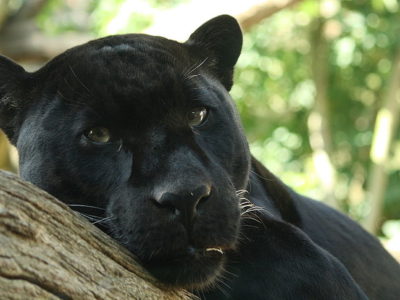
Panther
Prefers to hunt at night than during the day!

Pointer
An independent, loyal and high energy breed!
Newest Animals that Start with the Letter P
The most recently added Animals that start with the letter P.
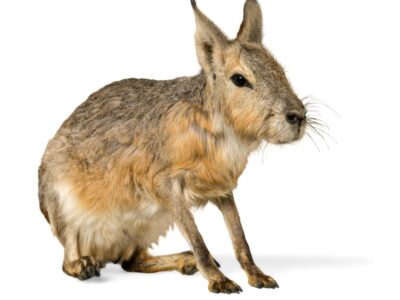
Patagonian Cavy
Patagonian cavies run anywhere from 18-45 mph!
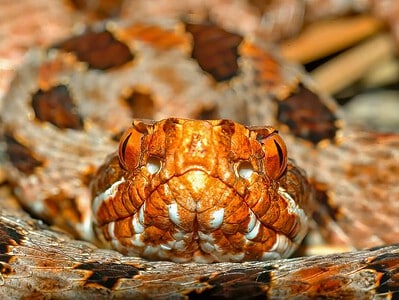
Pygmy Rattlesnake
Pygmy rattlesnakes’ rattle is so small it can only be heard from about three feet away.
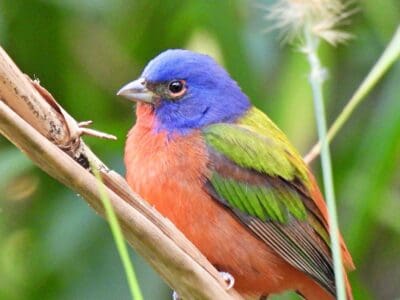
Painted Bunting
They are one of the most colorful species of birds.
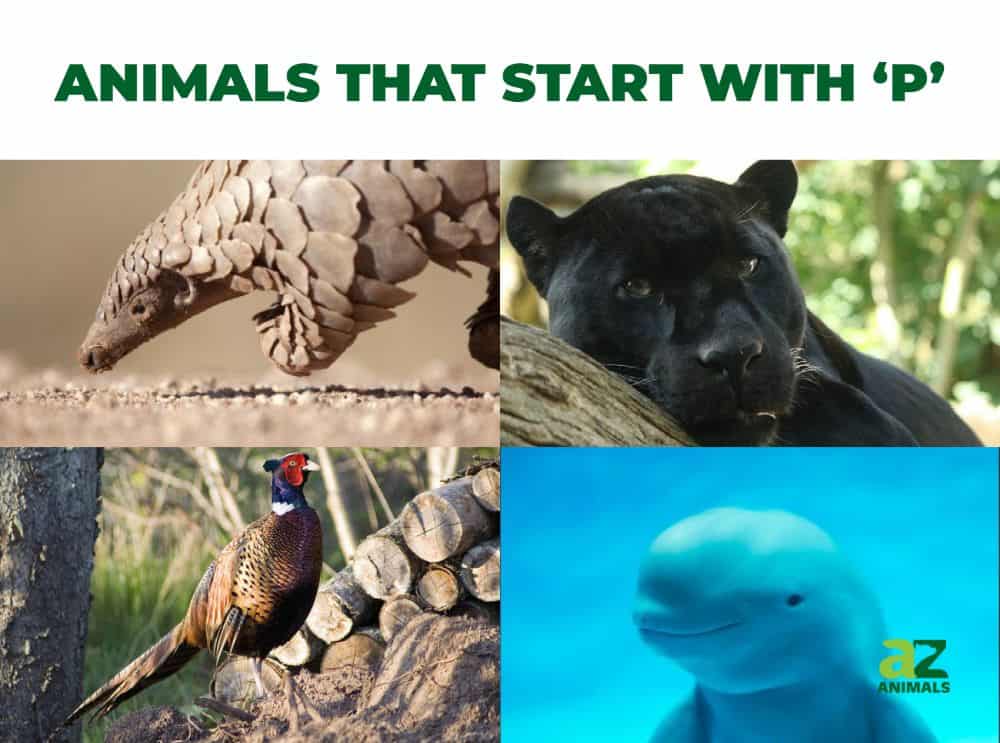
Animal by Letter Lists
- Animals that Start with A
- Animals that Start with B
- Animals that Start with C
- Animals that Start with D
- Animals that Start with E
- Animals that Start with F
- Animals that Start with G
- Animals that Start with H
- Animals that Start with I
- Animals that Start with J
- Animals that Start with K
- Animals that Start with L
- Animals that Start with M
- Animals that Start with N
- Animals that Start with O
- Animals that Start with P
- Animals that Start with Q
- Animals that Start with R
- Animals that Start with S
- Animals that Start with T
- Animals that Start with U
- Animals that Start with V
- Animals that Start with W
- Animals that Start with X
- Animals that Start with Y
- Animals that Start with Z
Thank you for reading! Have some feedback for us? Contact the AZ Animals editorial team.





